
When the Claim is a Wreck: Wake-up Call for Our Industry
By Jennifer Hurless, J.D., President of PartnerSource
For most of us working in risk management, our claim experience resides on the defense side, where we regularly work to resolve conflict without the need for litigation. But, have you ever found yourself lost “on the other side”? PartnerSource President Jennifer Hurless talks about the dark side of the industry and how positive players can separate themselves from the scare tactics, overdue aggression and confusion those with injuries are often subject to. Find out how to stay on the good side.

The Role of Compassion in Managing Work Injury Claims
In today’s increasingly litigious environment, it is essential to evaluate our claims practices to ensure injured workers feel supported and cared for, reducing the likelihood of them seeking legal representation.
PartnerSource knows that success in achieving the optimal outcomes is often helped by a dose of compassion—one that often helps avoid larger, more costly scenarios. Consider this unique scenario.

Did You Know? PartnerSourcer Becky Rucker Combines Long Drives with True Crime
When your commute to work stretches nearly two hours, you need something to help pass the time and keep your brain engaged. For Becky Rucker, team coordinator at PartnerSource, the answer is a good look at the dark side of humanity in the form of true crime podcasts. Get Becky’s recommendations for good true-crime podcasts.

Understanding, Reducing and Managing Texas Option Attorney Activity
By Richard S. Johnson, J.D., Executive Vice President, PartnerSource
Approximately five years ago, COVID-19 and its social/economic impacts dramatically altered the way in which employers and employees interact. Texas’ pro-business environment began attracting larger employers and more new residents, resulting in more overall workplace injury claims. At the same time, post-COVID employee culture shifted employees toward reduced conformity with traditional employer norms. COVID-19 caused smaller businesses to fail, resulting in the employees of those businesses joining larger companies and demonstrating reduced loyalty to their new employers.
Social media and technology have further influenced employee behavior by fostering individualism, impatience and divisiveness. This cultural change - paired with a misunderstanding of Texas Option law by newer, less experienced attorneys - has led to many legal cases having much longer durations and higher defense costs. Additionally, a few unusually high arbitration and jury awards have encouraged more attorneys and clients to pursue Texas Option liability cases, often with unrealistic expectations based upon the facts of these cases.

Application of Good Cause in Claims Investigations
One question PartnerSource hears frequently is: “How and when should Good Cause be applied?”
For those utilizing a Texas Option plan prepared by PartnerSource, the concept of Good Cause is familiar, but the fine details of the whole investigation process may not be fully understood. This case study aims to dissect the investigation process for timely reporting of work-related injuries and the potential application of Good Cause within the plan. PartnerSource advises employers on creating Texas Option plans that delineate specific timeframes for reporting work-related injuries, which vary based on employer preferences. All plans incorporate the consideration of Good Cause during the investigation of timely reporting.

Texas Option Companies Lead the Way in Flood Relief Efforts
Following the devastating floods that swept across Central Texas in July, many Texas Option companies have shown yet again how much they care by going above and beyond to support impacted communities. Their swift action and generous contributions have made a meaningful difference in the lives of countless Texans—and all of them have our heartfelt gratitude and admiration.

On My Desk: Letter Openers
By Caryl Piper, Team Coordinator, PartnerSource
On my desk sit a couple of letter openers. They are small, simple letter openers—but they are also a big reminder to adapt and evolve. My career before coming to PartnerSource includes 16 years spent at the company that became the National Envelope Corporation. I was there from the early 1990s through 2010, when paper was king. In my roles as executive assistant to the chief operating officer and as a marketing coordinator, I had a front-row seat to an industry experiencing a large amount of transformation in a short window of time.

Texas Supreme Court Confirms an Important Defense Available to Employers Utilizing the Texas Option
By Staci Cassidy, JD, Senior Vice President of PartnerSource
In a recent decision, the Texas Supreme Court ruled that a negligence claim against a nonsubscriber is not a claim for benefits under the Texas Workers’ Compensation Act, and therefore nonsubscribing employers can designate a third party as responsible for an employee's injury under the Texas proportionate-responsibility statute. This decision allows a nonsubscriber to have its alleged fault for an employee’s injuries compared to that of the designated third party and thereby reduce its liability for any awarded damages to only the percentage of fault apportioned to it.

Defining a Covered Work-Related Injury: Aggravation or Exacerbation?
Case Study: Aggravation or Exacerbation? Knowing the difference is key to making the right call on coverage. Learn how Texas injury benefit plans define covered injuries based on objective medical evidence – and how important it is to combine expertise with objective evidence. Check out these real-examples.

DOL Issues Cybersecurity Guidance Update
The U.S. Department of Labor (DOL) issued Compliance Assistance Release No. 2024-01. This guidance clarified that DOL cybersecurity guidance issued in April 2021 applies to all ERISA-covered plans – including health and welfare plans. Although Texas injury benefit plans are not considered “group health plans” in most cases for ERISA purposes, these plans are still considered “welfare plans.” For that reason, Texas injury benefit plans must comply with ERISA requirements that are applicable generally to welfare plans – including this new guidance.

Fifth Circuit Adopts “Meaningful Dialogue” Requirement For Benefits Claim Reviews
In Dwyer v. United Healthcare Insurance Co., the Fifth Circuit Court of Appeals held that United Healthcare (“UHC”) breached its ERISA fiduciary duties by failing to engage in a “meaningful dialogue” with the claimant as part of the benefit plan’s claim review process.

Did You Know? Kathryn Hazen
After shouldering the planning of her own wedding, PartnerSource Team Coordinator Kathryn Hazen asked her husband to pick and plan their honeymoon getaway – a trip that included some very special guests. Where did they go and who showed up?

The Meaning of Unreasonably Dangerous
By Cassandra Diaz and Trek Doyle, Doyle & Seelbach PLLC
Recent decisions from the Texas Supreme Court (and other courts) have clarified what evidence is needed to establish that a condition is “unreasonably dangerous” for purposes of a premises liability claim under Texas law. Pay & Save, Inc. v. Canales, 691 S.W.3d 499, 503 (Tex. 2024); see also United Supermarkets, LLC v. McIntire, 646 S.W.3d 800 (Tex. 2022) and Ford v. Alger, 228 S.W.3d 163 (Tex. 2007).[1] The clear trend is that avoidable commonplace conditions or conditions that do not involve prior incidents, complaints, or regulatory violations are not considered unreasonably dangerous as a matter of law. Importantly, these decisions make it clear that a plaintiff cannot simply hire an alleged safety expert to offer an opinion that a condition is unreasonably dangerous. The Court has repeatedly ignored conclusory expert opinions that a condition was unreasonably dangerous. Collectively, these decisions are very important for counsel defending premises liability cases. For adjusters or others who are charged with investigating and evaluating slip/trip-and-fall or other premises claims, the opinions should be considered in framing questions to pose to claimants and witnesses.
1 Generally, “[t]o prevail in a premises-liability case, an invitee-plaintiff must show that (1) a premises owner had actual or constructive knowledge, (2) of some unreasonably dangerous condition on the premises (3) but the owner did not exercise reasonable care to reduce or to eliminate the unreasonable risk of harm, (4) which proximately caused the plaintiff’s personal injuries.” Canales, 691 S.W.3d at 502 (emphasis added).

Did you know? Tim Fatheree Shares Life Lessons from the Diamond
PartnerSource Claims Manager Tim Fatheree is known for hitting home runs in his work helping employers take good care of their injured employees. Did you know that Tim was a part of a national championship winning baseball team? The experience of training and working with a dedicated group of committed teammates is knowledge Tim draws on daily.

Case Study: Creating a Win-win with Bona Fide Return-to-work Offers
Does the offer take into account all considerations for it to be bona fide?
An offer to return to work modified duty is beneficial for an injured worker – but only if their individual circumstances are considered.
One of the many benefits of an occupational injury benefit program is injured employees are treated by quality physicians specializing in occupational medicine. Not only are these physicians trained on the protocols for treating occupational injuries, they’re also keenly aware of the physical and psychological benefits of allowing employees to return to work when medically appropriate, be it full duty or modified duty.
Recently, PartnerSource was asked to advise on a case in which an injured employee was released to modified duty, but the employee refused to return to work. The employer was concerned. Per the terms of the client’s injury benefit plan, an employee is required to timely report to work and perform modified duty in accordance with the approved physician’s assigned work restrictions. If the employee does not do so, the claims administrator shall send the employee a compliance letter reminding them of their responsibilities under the plan.
Was sending the employee a compliance letter an appropriate next step? No, not in this case.

Is Temporary Staffing a Permanent Headache When Workers Are Injured on the Job?
By Julie Lambeth, J.D., Executive Vice President, PartnerSource
Exciting news! Your company is experiencing a sudden increase in business, and you urgently need more employees to help process orders. A straightforward solution is to hire additional workers through a temporary staffing agency. These agencies handle recruitment, screening and provide insurance for the employees, allowing you to expand your workforce without increasing liabilities. But, as Lee Corso famously says, "Not so fast, my friend!"
While utilizing a temporary staffing agency can be an ideal solution for some employers, it must be approached with caution and a thorough review of the staffing agreement. Typically, a staffing agreement states that the agency will provide various benefits to their employees, such as group health, a 401(k), and workers' compensation insurance in case of work-related injuries. However, for an employer utilizing the Texas Option, the critical question is whether this workers' compensation coverage extends to them as the client company.

U.S. Supreme Court Limits Regulatory Authority of Federal Agencies
By Richard S. Johnson, J.D., Executive Vice President of PartnerSource
Recently, the U.S. Supreme Court in a series of cases restored balance to the separation of powers between the legislative, executive and judicial branches of the federal government. Learn about this and the potential impact on Texas Option Employers.

Case Study: Removing Roadblocks for Injured Employees Needing Medical Care
PartnerSource advises clients whose employees encounter travel-related issues when getting to medical care
Studies show that receiving the appropriate medical treatment in a timely manner helps create better medical outcomes for injured employees. But what if an injured employee has to travel far distances to see the appropriate physician for care?

PROTECTING ARBITRATION: Assessing your Program’s Vulnerability After Bissonnette
By Staci Cassidy, JD, Senior Vice President, PartnerSource
Many Texas injury benefit programs incorporate an arbitration policy as the means for resolving any tort claims. Our May 2024 Newsletter discussed two recent U.S. Supreme Court cases on arbitration (Saxon 2022 and Bissonnette 2024). Specifically, in these two cases, the Court that held an employee’s agreement in a contract of employment to resolve disputes with his or her employer through arbitration is not enforceable under the Federal Arbitration Act (“FAA”) when the employee’s primary work duties have a direct connection to, or reflect active engagement in, the movement of goods across state borders. This exception to enforcement of arbitration under the FAA, is commonly referred to as the “Transportation Worker Exception.” If the Transportation Worker Exception applies, an employer’s arbitration policy may not be enforceable.
For the exception to apply, the employee must establish (1) the agreement to arbitrate is part of his or her contract of employment and (2) his or her typical job duties play a direct role in the movement of goods across state lines.

Case Study: All in Good Fun – But Who is Responsible?
The answer lies in communications.
Being perceived as an engaged employee can often involve participating in activities or events not specifically related to the course and scope of employment. However, these same events can be important ways to build bonds with co-workers and show commitment to your employer or the causes your company supports.
Team-building is important – but are injuries that may arise during these activities covered? And how do you tell if they are or are not? From years of experience in helping employers understand the difference, PartnerSource advises that it really comes down to how these events are communicated to employees.

$6 million for Tripping on a Display of Watermelons? The Texas Supreme Court Says No
By Sonji Winters, JD, PartnerSource
Premises liability lawsuits can be a significant concern for businesses in Texas. These lawsuits typically arise when someone is injured on another person’s property due to alleged negligence. Therefore, it is essential for businesses to be knowledgeable about potential strategies for defending against such lawsuits.
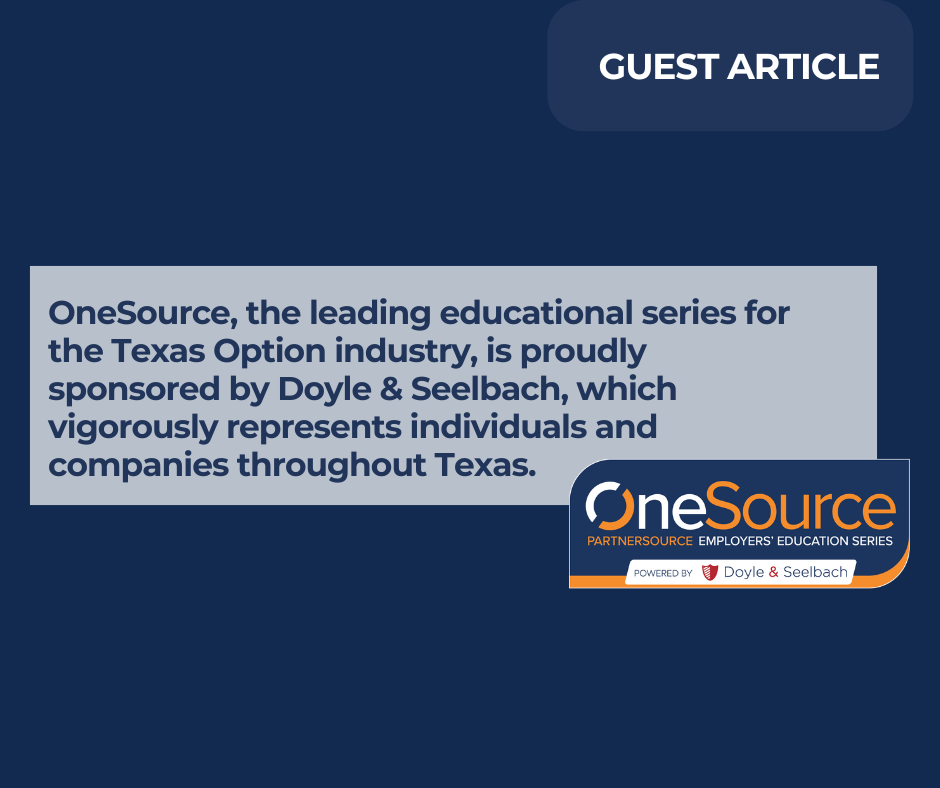
Unraveling the East Texas Medical Ruling: A Threat to Nonsubscriber Negligence Claims in Texas
By Doyle & Seelbach
Texas courts for decades have recognized that nonsubscriber negligence claims arise out of common law, not the Texas Workers’ Compensation Act. However, a recent decision by the Tyler Court of Appeals threw a wrench in current case law. In the case East Texas Medical, the Tyler Court incorrectly held that a nonsubscribing employer could not designate responsible third parties because a negligence claim against a nonsubscriber is “an action to collect workers’ compensation benefits” under the TWCA. In re E. Tex. Med. Ctr. Athens, No. 12-23-00263-CV (Tex. App. Nov. 21, 2023). Not only does the Tyler Court ignore decades of precedence on nonsubscriber law and misinterpret precedent, they also completely disregard the plain language of the responsible third-party statute.

Apportionment and Responsible Third Parties: Can A Texas Option Employer Apportion Fault in a Negligence Claim?
By Julie Lambeth, J.D., Executive Vice President, PartnerSource
Most appellate courts agree a negligence action against a nonsubscribing employer arises out of common law. However, the Tyler Court of Appeals has again used its rogue characterization of a nonsubscriber negligence action as “action to receive workers’ compensation benefits” to strike a nonsubscribing employer’s ability to apportion responsibility to a third party.
We asked Julie Lambeth, J.D., to provide an overview of the decision of In re East Texas Medical Center, Athens, (No. 23-1039) and explanation of whether this case will be heard by the Texas Supreme Court. For any questions you may have on this issue or others, your PartnerSource team leader is happy to discuss.

Time, Space and Cause: A Case Study on Course and Scope
In the complex world of work-injury claims, the most important question in the life of a work-injury claim may be this one: Did the injury arise from and occur during the course and scope of employment?
A recent case brings into clear focus the subtle differences in time, space and cause – and the importance of their combination in the three-boundary issue facing those making coverage decisions.

SUPREME COURT RULING: Transportation Industry Not Only Industry Employing ‘Transportation Workers’ Exempt from Arbitration Under Federal Arbitration Act
By Staci Cassidy, J.D., Senior Vice President, PartnerSource
Does your company transport good across state lines? Even if you are not classified as a transportation company, this U.S. Supreme Court ruling may apply to you.
The Federal Arbitration Act (“FAA”) was passed in 1925 in an effort to expedite the resolution or settlement of disputes at a time when courts’ dockets were backlogged, resulting in extended delays in resolution and higher costs. The FAA therefore favors arbitration, specifically stating arbitration agreements are “valid, irrevocable, and enforceable, save upon such grounds as exist at law or in equity for the revocation of any contract.” 9 U. S. C. §2. Of additional significance, the FAA preempts state law that impedes arbitration. Therefore, the FAA governs the majority of our clients’ arbitration policies used to resolve claims of negligence arising under their Texas injury benefit programs.

Pregnant Workers Fairness Act Key Provisions and Best Practices
By Sonji Winters, J.D., Senior Vice President, PartnerSource
We previously informed you of the passage of the Pregnant Workers Fairness Act (PWFA) that requires certain employers to provide “reasonable accommodations” for an employee with known limitations related to pregnancy, childbirth, or a related medical condition, unless the accommodation will cause the employer an “undue hardship”. Although the law went into effect in June 2023, the Equal Employment Opportunity Commission (EEOC) has just recently released the final rule and guidance to implement the PWFA. The final rule will take effect on June 18, 2024.
Recently, several state attorney generals challenged the law as unconstitutional. Specifically, the AGs argue the EEOC unconstitutionally exceeded the PWFA's limits by including abortion as a covered condition. No injunction has been entered enjoining the implementation of the final rule. Therefore, most employers are subject to the law at this time.
This article will highlight some of the key provisions of the final rule and provide best practices for applying the law in your workplace.

Myths vs. Facts on Plaintiff Attorney Activity in Texas Option Cases
By Richard S. Johnson J.D., EVP
Approximately four years ago, COVID-19 dramatically altered the way in which employers and employees interact. Since that time, the Texas Option industry has seen an increase in new plaintiff attorneys taking Texas Option employers’ liability cases for injured Texas employees. At the same, the industry has seen plaintiff attorneys and/or their employee clients take more aggressive positions and demonstrate less openness to early claim resolution. Fortunately for PartnerSource clients, the increase in new attorney activity has NOT resulted in increased arbitration award frequency or amounts.

The Win-Win: How to Show Care for Injured Employees and Avoid Litigation
When a client receives a letter of representation, it’s always interesting to review the claim file to identify what likely caused the employee to retain an attorney. In many reviews, we see that the employee’s benefit claim was denied, often without the claims administrator first speaking with the employee. Here are some tips on how to best handle a benefit denial to avoid a claimant retaining counsel.

Has the ‘Pain Pendulum’ Swung Too Far?
By Amanda Thompson, J.D., Senior Vice President, PartnerSource
Litigation of CRPS had pretty much died out in the last decade, so its reappearance is notable. There is no scientific explanation for the increase, and without that, it must mean that this increase is manmade, which I believe fits squarely within the paradigm of the shifting pain pendulum.

Case Study: To Suspend or Not to Suspend, That is the Question
An interruption in an injured worker’s life can also interfere with the medical treatment they are receiving under their employer’s Texas Option plan. And this could potentially delay their path to recovery.
Consider this man’s experience: While at work, an employee injured his back and is receiving medical treatment under a Texas Option plan. In the time period he is receiving treatment, he suffers from a stroke, which is unrelated to the original work injury. This employee has not finished his treatment for the back injury; however, he now has to receive treatment for the stroke and is unable to continue treatment for his back at this time. What do we do?

Don’t Utilize the “Pay No Attention to That Man Behind the Curtain Approach” in Enforcing Electronic Arbitration Agreements
It has been a little over two years since the Texas Supreme Court handed down its decision in Aerotek v. Boyd, a decision that should be the seminal case on “how to” prove an employee has electronically agreed to arbitration as the forum to resolve disputes. The problem is the “how to” has proven a little too techy for risk management/HR personnel, lawyers -- even justices themselves -- to understand and explain to the lay person.

Payor Beware: FBI Warns of Business Email Compromise Scam
By Amy Hanson, Vice President, PartnerShip Services
In today’s world, it seems like every click of the mouse is a risk, as more sophisticated phishing schemes have made it increasingly difficult to discern what’s legitimate and what’s not. One such scenario surfaced recently during payment of a settlement. Because this situation is integral to claim operations, we felt it was important to share it so our clients and business partners could avoid becoming a victim of this scam. The most frightening aspect? The timing of this scheme made a request for payment seem completely legitimate.

Video: Helpful Tool in Making Coverage Determinations
Video security cameras can be a key tool in helping identify causes of workplace injuries and assisting adjusters with investigations. Video can assist when trying to fill in the blanks of what occurred, can help approved providers determine the best treatment plan for that individual, and can also help if an appeal is filed.

Meet Sonji Winters, J.D., Senior Vice President
New attorney team lead at PartnerSource brings decades of corporate legal experience.

Pregnant Workers Fairness Act (PWFA): What Employers Should Know
The Pregnant Workers Fairness Act (PWFA) requires certain employers to provide “reasonable accommodations” for an employee with known limitations related to pregnancy, childbirth, or a related medical condition, unless the accommodation will cause the employer an “undue hardship.” The law applies to employers with 15 or more employees and went into effect June 27, 2023.

Texas Supreme Court Dodges Answering Important Question in In re Rudolph Automotive, LLC
By Donna Peavler, J.D., Director, PeavlerBriscoe
A lingering question in nonsubscriber law is to what extent workers’ compensation concepts relating to “course and scope of employment” issues carry over into the nonsubscription realm. This is an important issue, because the Texas Supreme Court has long directed Texas courts to interpret the phrase “course and scope of employment” more broadly in workers-compensation cases than in non-workers’-compensation cases, because the policies underlying the different types of cases are different. In workers’-compensation cases, the worker has given up the right to sue, so coverage should be interpreted broadly. In nonsubscriber and vicarious-liability (third-party) cases, on the other hand, employees and third parties have intact their ability to sue and hence still have available remedies, so there is no need to interpret “course and scope” so broadly.

Rickety Ladders and Other Artifacts: Always Preserve the Evidence
By Julie Lambeth, J.D., executive vice president, PartnerSource
“Your Honor, we were just informed by a former employee of the hotel that for the past two years he has been in possession of the ladder at issue in this matter. He has the ladder with him and he is here today to testify as to the condition of the ladder at the time of the incident.” Needless to say, this was a startling revelation. I guess you could say this is as close as I will get to a “Perry Mason” moment.

Case Study: Safety Equipment? Or Safety Hazard?
A wise person once said that the only good injury claim is the claim that never happens.
Every day, the proper use and placement of safety equipment or basic personal protective equipment (PPE) prevents many injuries and ailments. But, what happens if the equipment designed to protect and prevent injuries is the proximate cause of a work-related injury?

Impact of Recent Federal Regulations on Texas Injury Benefit Plans
By Richard S. Johnson, EVP, PartnerSource
What is the ‘Surprise Billing Final Rule’? If you have ever had a major medical procedure, you know the “sticker shock” of getting a hospital or surgeon bill that you thought your group health plan would be paying in full. The federal government refers to this practice as “surprise billing.”

Case Study: Injury on the Job, Out of the State
By Richard S. Johnson, EVP, PartnerSource
What is the ‘Surprise Billing Final Rule’? If you have ever had a major medical procedure, you know the “sticker shock” of getting a hospital or surgeon bill that you thought your group health plan would be paying in full. The federal government refers to this practice as “surprise billing.”

Five Questions with Melissa Smith
The newest member of the PartnerSource team is no stranger to claims. Her insatiable need to know how something happened has been a useful skill across her career. She enjoys the quiet rural life punctuated by a lively two-step every now and again. Meet Melissa Smith.

Five Questions with Sean Parker
He approaches his work like it’s an archeological dig, turning over every stone to look for information and answers, and then putting the puzzle together to ultimately help his clients take better care of injured workers. When he’s not at work, he’s often found under a classic car, putting the physical pieces together to solve mechanical puzzles and bringing these cars back to life. But in the office, when the elevator door opens, you just might catch him jamming to some ‘80s tunes. Meet Sean Parker.

Progress, Not Perfection: Industry Update, Advancement and Reflection
Jennifer Hurless gives a summary report on the state of the Texas Option industry. While outlining the lessons learned from COVID-19 and the Department of Labor feedback, Jennifer will offer reflections on the progress made toward the advancement of the Option industry.

Five Questions with Sarah Priest
The daughter of a long-time PartnerSourcer, she has perspective on the company like no one else, as for years she heard stories of people whose lives were improved. Now, this former educator turns her talents toward the mission of achieving better medical outcomes for injured workers, joining the PartnerSource team and bringing her unique dedication to lifelong learning. In addition to her role as a team coordinator, this talented professional also heads her own menagerie in her spare time and enjoys giving back to the community. Meet Sarah Priest.
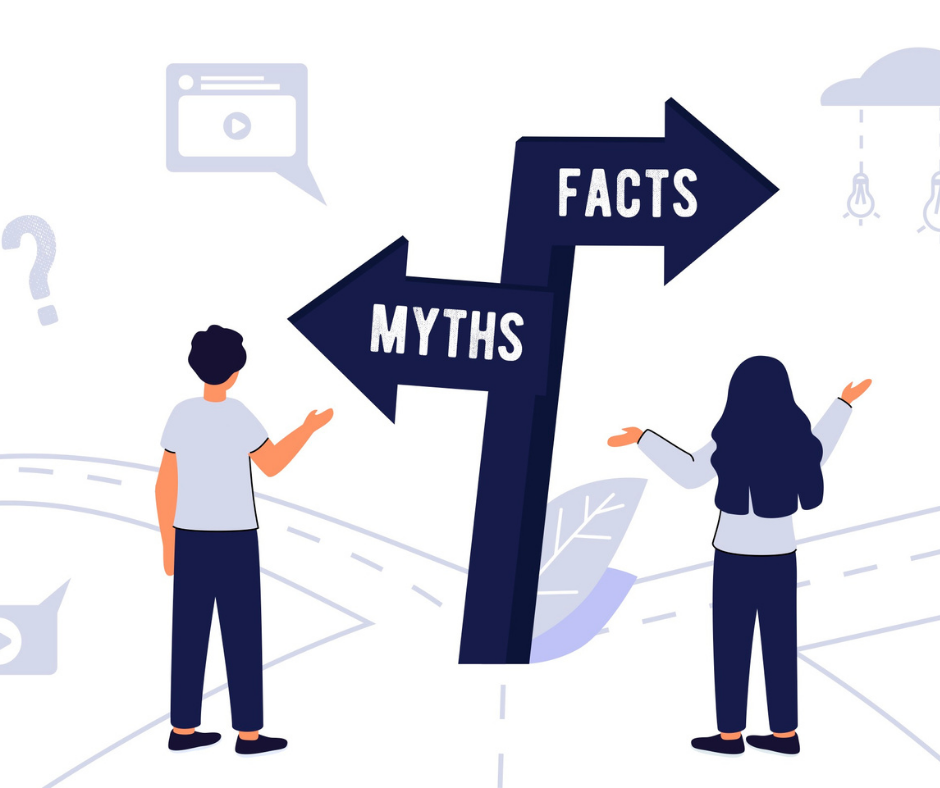
Mythbusters: Debunking Common Misconceptions about Texas Option Programs
Opting out of the Texas Workers’ Compensation system is becoming more and more common in the state of Texas. This innovative way of managing work injuries is here to stay. Even with the increase in businesses operating in Texas using this method to improve outcomes while lowering costs, there is still misunderstanding about how a Texas Injury Benefit Plan can work. There are three common myths about the innovative Texas Option programs.

Case Study: Optimal Outcome Reveals Potential Catalyst for Future Claims
A week into his training at a restaurant, a trainee became angry and shoved his trainer in the kitchen causing the trainer to slip and break his leg. PartnerSource explores workplace violence and what to consider.

Is the Future of Arbitration at Risk?
The recent passage of the Ending Forced Arbitration of Sexual Assault and Sexual Harassment Act of 2022 (also known as the #MeToo bill) has shifted the landscape of mandatory arbitration. Although the #MeToo bill is very specific as to what types of claims are barred from mandatory arbitration, a much broader bill was passed by the House of Representatives on March 17, 2022, that calls into question the future of arbitration. The Forced Arbitration Injustice Repeal Act of 2022 (“The FAIR Act”), if passed by the Senate, would end the ability to utilize pre-dispute arbitration agreements in employment, consumer, antitrust and civil right disputes.

Case Study: Going Above and Beyond for Workers with Permanent Disabilities
Over the past few years, the trend for Texas injury benefit plans has been to increase medical, wage and accidental death & dismemberment (AD&D) benefits in order to better protect injured employees against catastrophic injuries. Nevertheless, many plans intentionally do not provide impairment benefits for permanent disabilities. Learn how PartnerSource helps clients achieve a fair outcome and restore balance between employers and injured employees.

Five Questions with: Lisa White
This self-effacing professional is a life-long learner who relishes helping others. Art and travel are her biggest passions in life, outside of her dedication to her family. She is moved by Monet and has big plans to see the world. Meet Lisa White.

5 Things I Love About Texas Injury Benefit Programs
Prior to starting at PartnerSource in 2007, Sean Parker had 18 years’ experience working at a large workers’ compensation carrier. Having a dual background in the Texas Option and workers’ compensation affords a unique perspective. Compared to workers’ compensation, there are so many things to love about Texas injury benefit programs. Here are his top 5.

Case Study: Teamwork Makes the Dream Work in Return to Work
Indemnity costs can quickly increase the total claim cost when an injured employee is unable to work in a full duty capacity. PartnerSource has designed custom plans that provide opportunities to proactively return an injured employee to work as soon as possible, once it is safe to do so. This allows a more interactive approach that is not always available under the workers’ compensation program. See how the plan provisions could reduce the indemnity exposure for the following scenario.

Texas Option Insurance Market Insights
After more than a decade of intense competition that has driven soft (low premium) pricing from innovative insurers, the market for Texas injury benefit programs has experienced significant change. Since early 2019, PartnerSource has seen major carrier entrants and exits and some curbing of the availability of high coverage limits and first-dollar defense. The good news is while there has been lot of changes in carriers, capacity, selection of risk, and more, the market remains stable and profitable.

Case Study: The Good, the Bad and the Ugly: Video’s Role in Getting the Facts
Video surveillance evidence can play an important supporting role in bringing to light all the facts when a worker is injured on the job. PartnerSource best practices include preserving as many facts as possible to support the ultimate coverage decision and achieve the best claim outcome. Video is an important tool that can help employers understand all aspects of the environment and actions that lead to an on-the-job injury.

Five Questions with Brenda Herrera
She started at PartnerSource in 2005, helping to institute a key department within the company. She enjoys putting her logic to work for clients to ultimately help them achieve better results for their injured workers, and her positive attitude is a hallmark for those who know her. Meet Brenda Herrera!
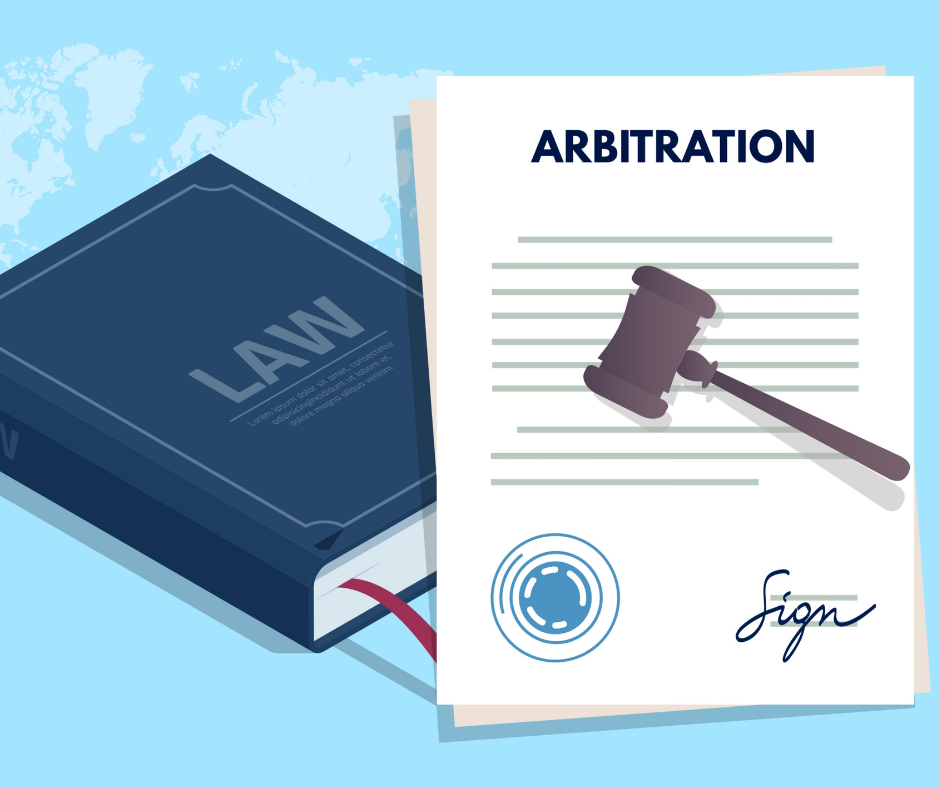
New Federal Law Bans Mandatory Arbitration for Sexual Misconduct Disputes
On March 4, 2022, President Biden signed into law the Ending Forced Arbitration of Sexual Assault and Sexual Harassment Act of 2021. The bill had bipartisan support in Congress and arose after the #MeToo movement gained international attention in 2017. Learn more about this new law and how it may impact Texas Option programs.

Case Study: Managing Mental Health
Throughout your career, you’ve asked so many injured workers how they are doing, you’ve inquired after their wellbeing, worked hard for their outcomes, and taken great concern in how they are. But how are you?

Five Questions with Caryl Piper
This team coordinator first learned teamwork in a pre-school outside of Paris. But it was a move to Texas and a friendly neighbor that brought her skills to PartnerSource. She puts extensive executive experience together with a friendly demeanor to make a difference for clients and the teams that assist injured workers. Meet Caryl Piper.
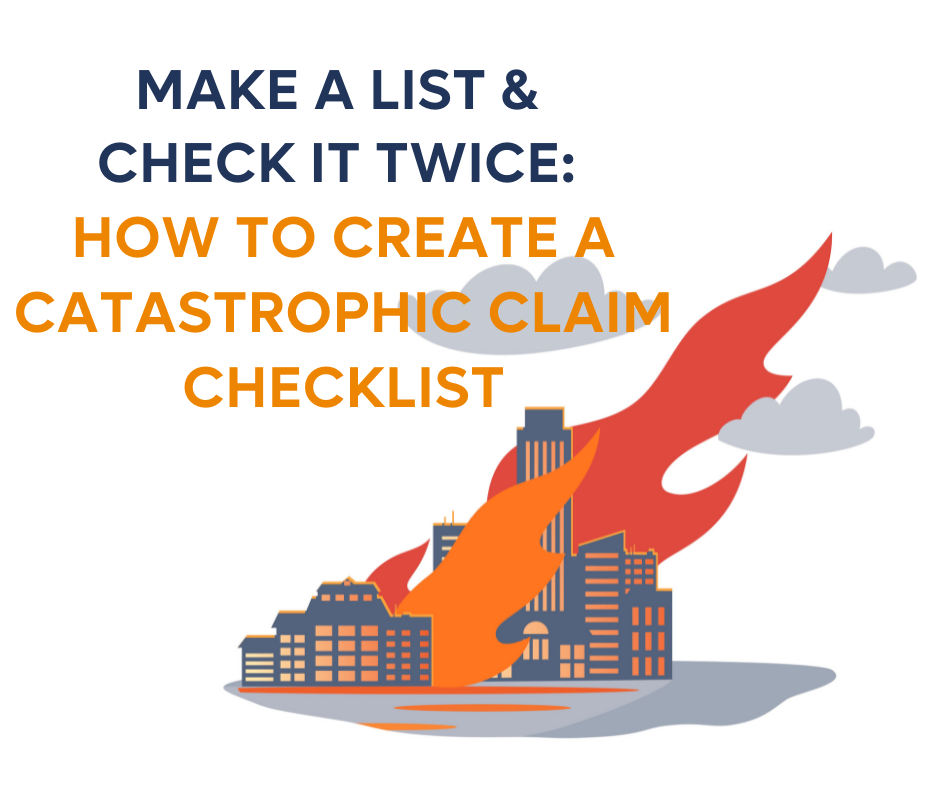
Make a List and Check it Twice: How to Create a Catastrophic Claim Checklist
If a catastrophic claim occurs, do you have a checklist for the handling of the claim? Even if your organization’s claims history is limited to minor soft tissue injuries, developing a Catastrophic Claim Checklist places you in the best position to respond quickly and efficiently to the needs of injured workers and their families. Preparing now will allow your team an opportunity to identify internal and external resources so that your organization’s Texas Option plan can seamlessly provide valuable support to your injured worker at the onset of the event.

Case Study: Flexibility Offered by Texas Injury Benefit Plan Empowers Employer to Act
Years into the COVID-19 pandemic, new strains and waves of illness continue to result in employees claiming they may have possibly contracted COVID in the course and scope of their employment. But as is the case under Texas workers’ compensation programs, most COVID claims are not covered under Texas injury benefit programs. Why is this the case?

Five Questions with Amanda Thompson, J.D.
Being an attorney may be in her blood, but this professional values her time spent with people from a variety of perspectives who all have the same mission: Achieving better medical outcomes for injured employees. Meet Amanda Thompson.

Good Cause – What Injured Workers Need To Know
The topic of "good cause" has created extensive conversation in the past few years in an industry dedicated to providing quality alternatives to workers’ compensation. PartnerSource has led the industry in advising on and amending language to incorporate a good cause definition and plan provisions to determine the applicability of good cause when an injured worker fails to comply with certain provisions of their employer’s injury benefit plan. These updates support the plan administrator’s role as a fiduciary, ensuring that unusual circumstances do not prevent an injured worker from accessing available plan benefits.

Determining Hernia Coverage
By Staci Cassidy, senior vice president, PartnerSource
PartnerSource injury benefit plans afford medical coverage for those injuries and for conditions that directly and solely result from the course and scope of employment -- with a few exceptions. Consistent among the few exceptions are criteria that, if satisfied, indicate the work activity, although not the direct and sole cause of the injury, is to a reasonable degree of medical probability a major contributing cause. Hernias are one such exception.
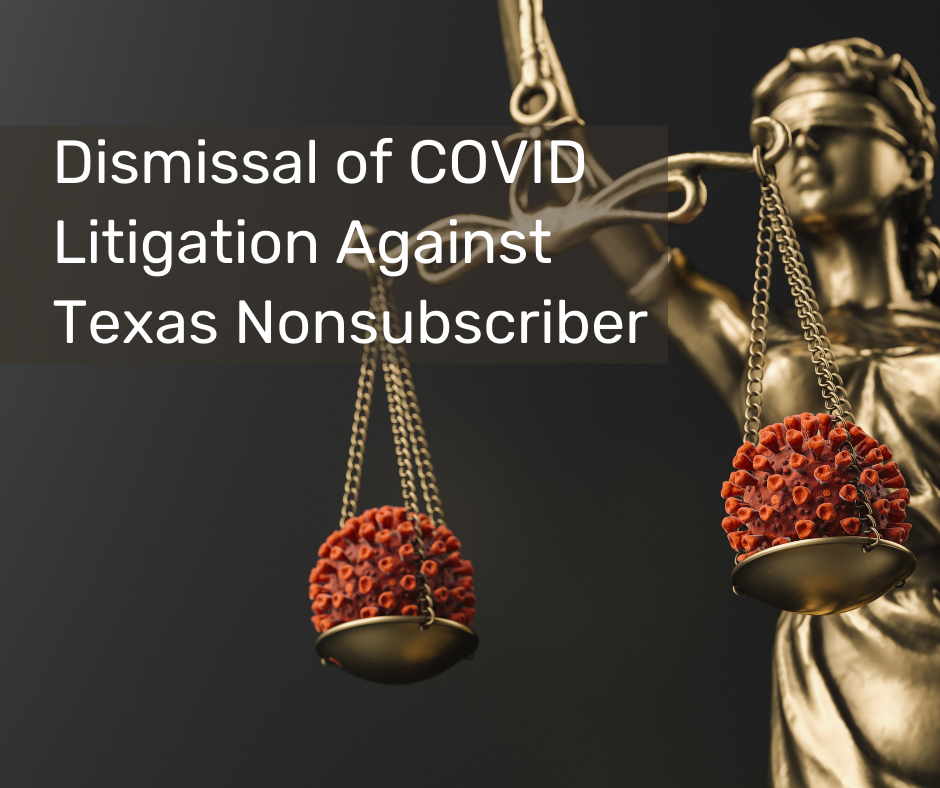
Dismissal of COVID Litigation Against Texas Nonsubscriber
By Jennifer Hurless, president, PartnerSource
A federal district court recently dismissed a case against Texas-based Tyson Foods, Inc., alleging exposure and contraction of COVID-19 by several employees at its Carthage, Texas, plant. The plaintiffs alleged that Tyson directed employees to return to work following stay-at-home orders and failed to provide personal protective equipment to its employees and implement social-distancing guidelines, which caused employees to contract COVID-19.
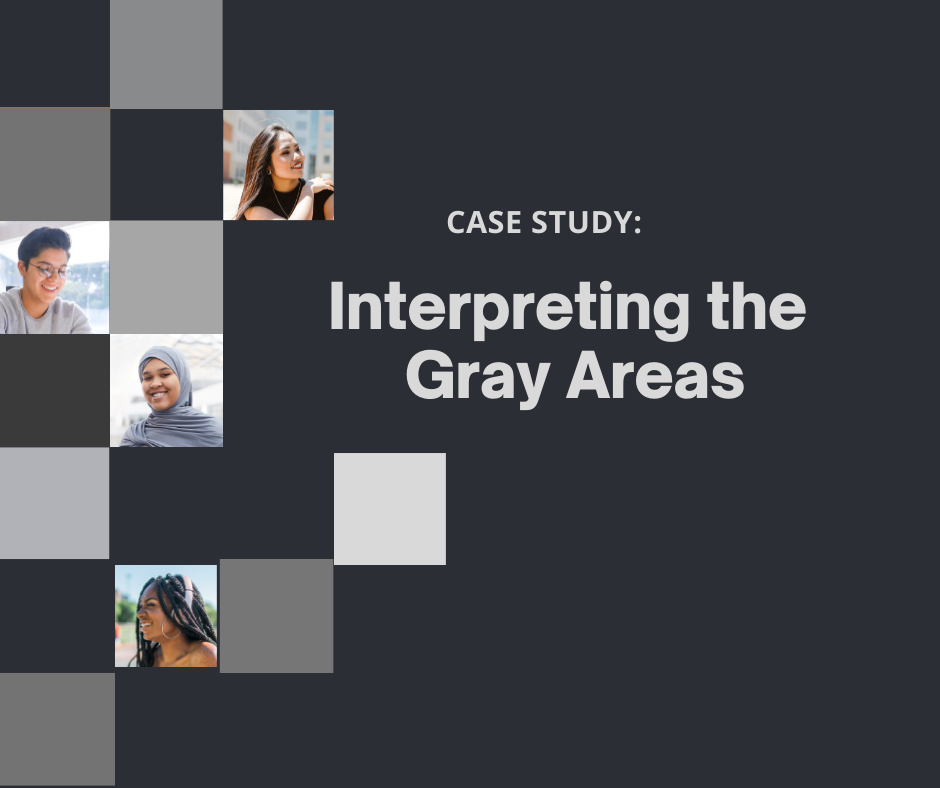
Case Study: PartnerSource Helps Interpret Gray Areas
Have you experienced a situation where an employee injury is so unique that it’s challenging to determine how the injury benefit plan applies in that specific set of facts? For more than 30 years, PartnerSource has designed custom plans for clients and consulted on claim decisions when plan questions arise. Despite the level of detail included in these custom plans, it’s impossible for every claim scenario to be contemplated, creating gray areas that need to be interpreted by the plan fiduciary. This can seem like a daunting task, magnified by the understanding that the injured employee is impacted by the decision. However, PartnerSource has demonstrated that by approaching any seemingly gray area with a few key things in mind, employers can feel confident the plan is being applied appropriately and fairly.

Department Five Questions with Sara Greene, PartnerSource Claims Manager
She combined two unique interests in a career that helps injured workers. A self-described "type A" personality, she throws caution to the wind when she pursues some favorite hobbies. Having worked with PartnerSource before she ever worked for the company, this claims manager has the distinction of being the only PartnerSource employee to have won a very special award. Meet Sara Greene.
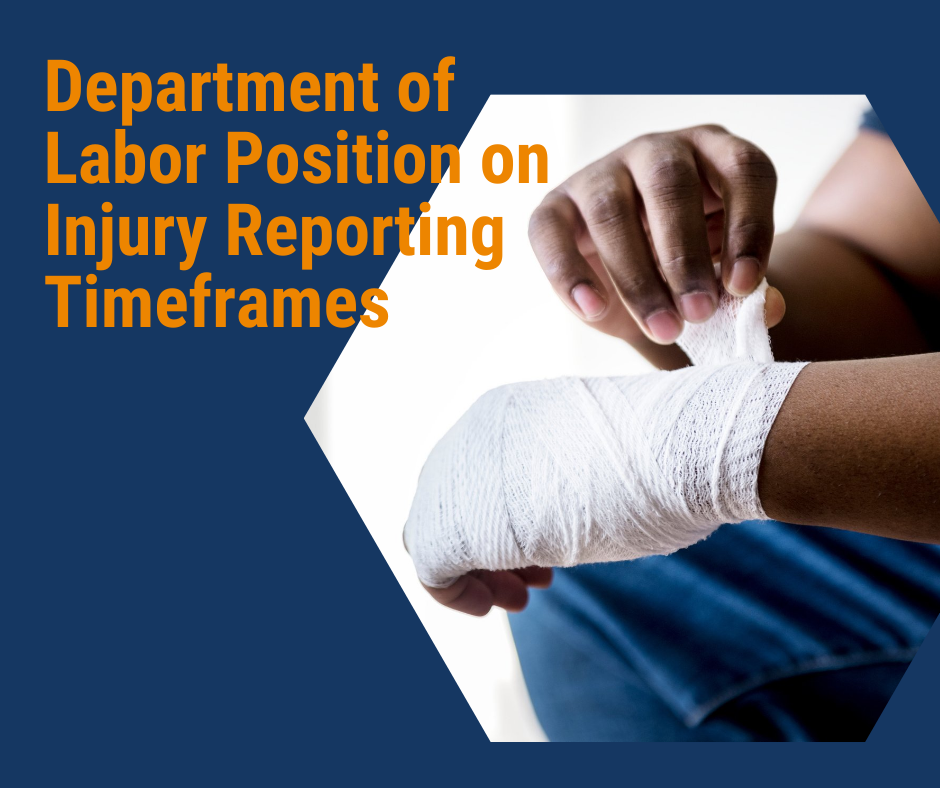
Department of Labor's Position on Injury Reporting Timeframes
By Jennifer Hurless, president, PartnerSource
The Employee Benefits Security Administration (EBSA) division within the Department of Labor (DOL) recently completed a review of several Texas injury benefit plans, including plan documents PartnerSource had drafted over the years. This fall, PartnerSource and all programs reviewed received a no action letter with guidance on how to administer the injury reporting provisions in a manner more consistent with EBSA’s interpretation of a long-standing claim regulation. Here’s what we have learned.
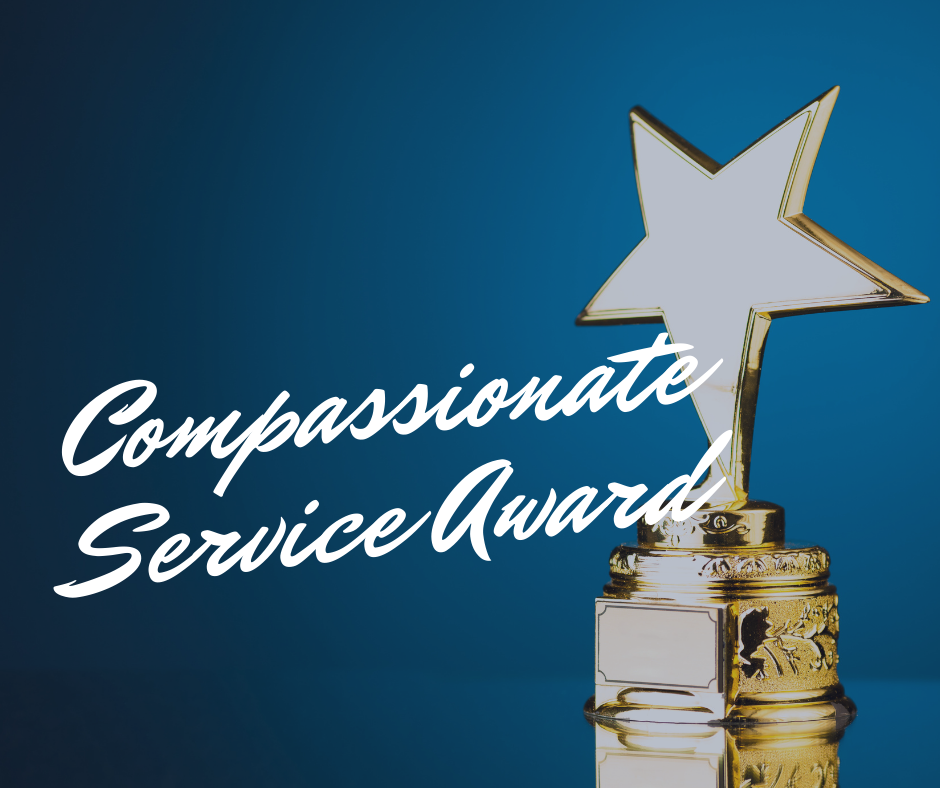
Compassionate Service Award Winners Honored for Super Service for Injured Employees
Two industry professionals were recently awarded for their outstanding dedication to employees’ health and well-being. Diane Holliday, RN, BSN, COHN-S, director of operations with OccMD; and Melissa Smith, senior claims examiner with Sedgwick; were each honored for their compassionate commitment to injured workers as winners of the Compassionate Service Awards at the 2021 PartnerSource Employers’ Conference held September 30.

Five Questions with Julie Lambeth, J.D., senior vice president of PartnerSource
She’s analytical and amiable, and hails from Michigan. Most people know her as an expert on the Texas Option and how it helps businesses take better care of their injured employees – but most don’t know she comes from a family of sports fanatics. Meet Julie Lambeth.

Negligence Liability Exposure: Are You Asking the Right Questions?
By Sean Parker, vice president of partnership services, PartnerSource
In addition to helping clients stay in compliance with Texas injury benefit program and ERISA requirements, PartnerSource also keeps a watchful eye for any claims that could potentially have negligence liability exposure. It’s yet another benefit of utilizing PartnerSource’s claim consulting services.

Case Study: Good Cause Exception
Most PartnerSource plans contain generous plan benefits conditioned on an injured worker following the terms of the plan, including reporting the injury or seeking treatment within defined timeframes. But sometimes circumstances exist that the injured worker could not foresee or were beyond their control. Or some benefits may exist for which the injured worker simply doesn’t know to ask. A plan document should allow exceptions for unusual circumstances; and, as fiduciaries, plan administrators should lend a hand, asking questions to enable injured workers to access all available plan benefits.

Five Questions with Kathryn Miller Hazen
She planned a wedding from 1,500 miles away — during a pandemic — but that was no big deal for this organized team coordinator. She’s a happy newlywed who enjoys the success of her teams both at home and at work. Meet Kathryn Miller Hazen.
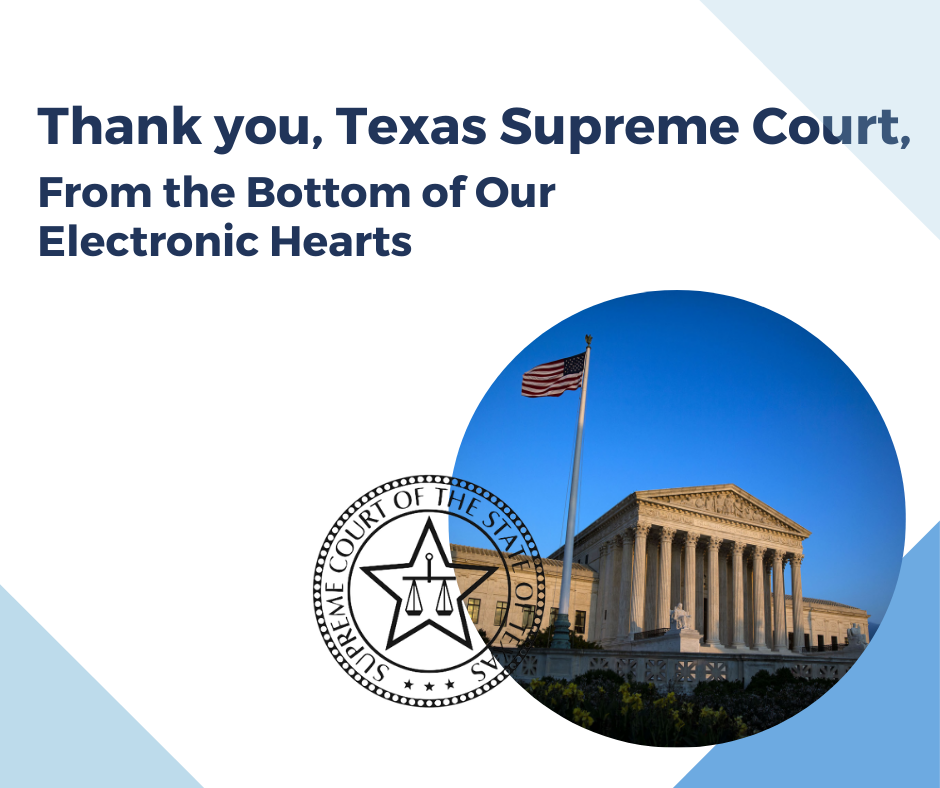
Thank you, Texas Supreme Court, From the Bottom of Our Electronic Hearts
By Amanda Thompson, J.D., senior vice president, PartnerSource
If you’ve discussed key opinions with anyone seeking to uphold arbitration in Texas in recent years, you’ve likely heard the word "Kmart" followed by a guttural groan. That same groan grew louder with the word "Aerotek." But thanks to the Texas Supreme Court, we are no longer groaning. In a recent decision favorable to employers that utilize electronic arbitration agreements (and, really, to all businesses that conduct electronic transactions in Texas), the Texas Supreme Court reversed the Dallas Court of Appeals decision in Aerotek.
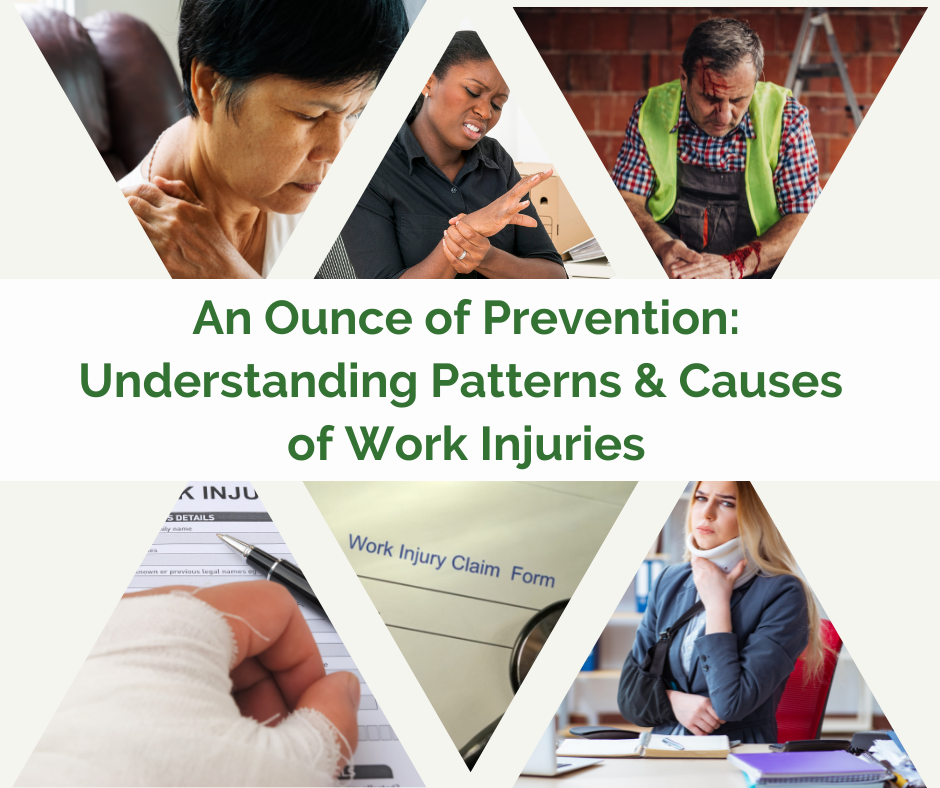
An Ounce of Prevention: Understanding Patterns and Causes of Work Injuries
A wise person once said, "The only GOOD claim is a closed claim." Successful Texas work injury programs take this wisdom even further to say, "The only GOOD claim is the one that never occurs!" In this case study illustrating how PartnerSource can help clients understand patterns and causes of work injuries and help devise a plan to mitigate future losses.
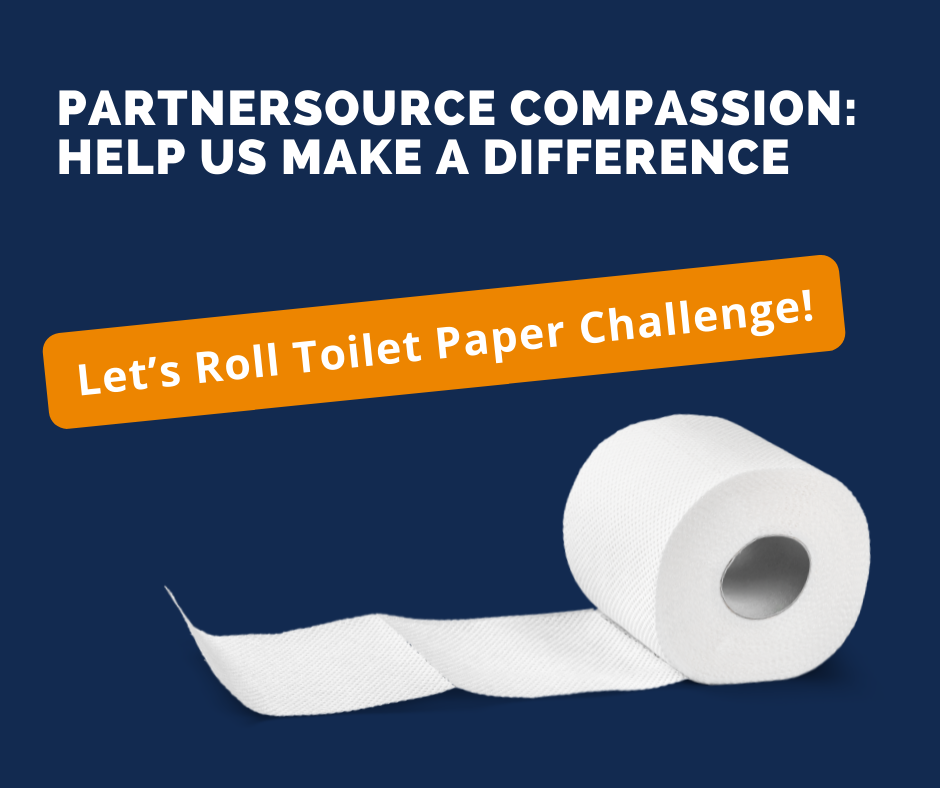
PartnerSource Compassion: Help Us Make a Difference
PartnerSource is participating in the Let’s Roll Toilet Paper Challenge, an initiative to help Metrocrest Services supply toilet paper for those in need. Please help us reach our goal of 500 rolls! Learn how you can help and some fun facts about toilet paper!

Five Questions with Helen Wolford
She was working remotely many years before it was common, is committed to broadening her culinary horizons, and finds herself completely at home with numbers and data. Meet PartnerSource Senior Business Analyst Helen Wolford.

Dude, Where’s Your Mask? EEOC Issues Guidance on Workplace Policies for COVID-19 Vaccinations
By Richard S. Johnson, J.D., executive vice president, PartnerSource
With increased vaccination access--coupled with the recent CDC exemptions for fully vaccinated persons--many employers are now very open to eliminating or reducing workplace mask requirements and other COVID-19 workplace accommodations. To help employers with this task, the new EEOC guidance answers some key questions.
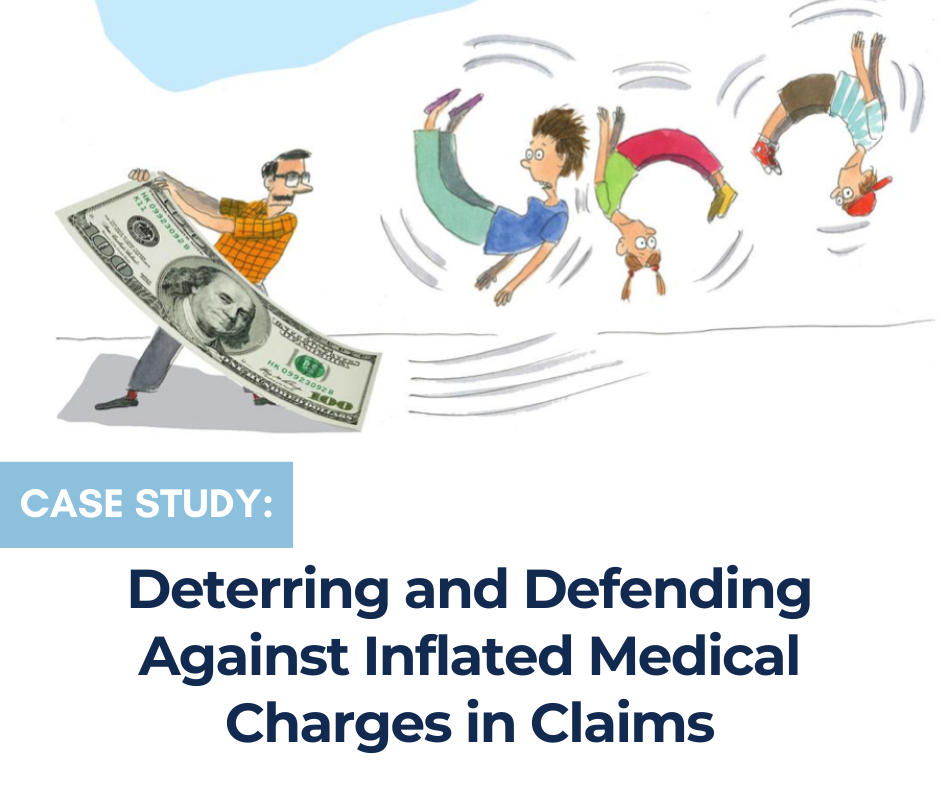
Deterring and Defending Against Inflated Medical Charges in Claims
PartnerSource helps clients take advantage of favorable Texas Supreme Court decisions and navigate Plaintiff attorneys’ tactics.

Five Questions with: Melek Kaplan
She’s originally from halfway around the globe, but she’s as Texan as they come. For this team player, organization is the key to her success and her drive comes from her desire to help her client, their injured employers, and her fellow teammates. Meet Melek Kaplan.
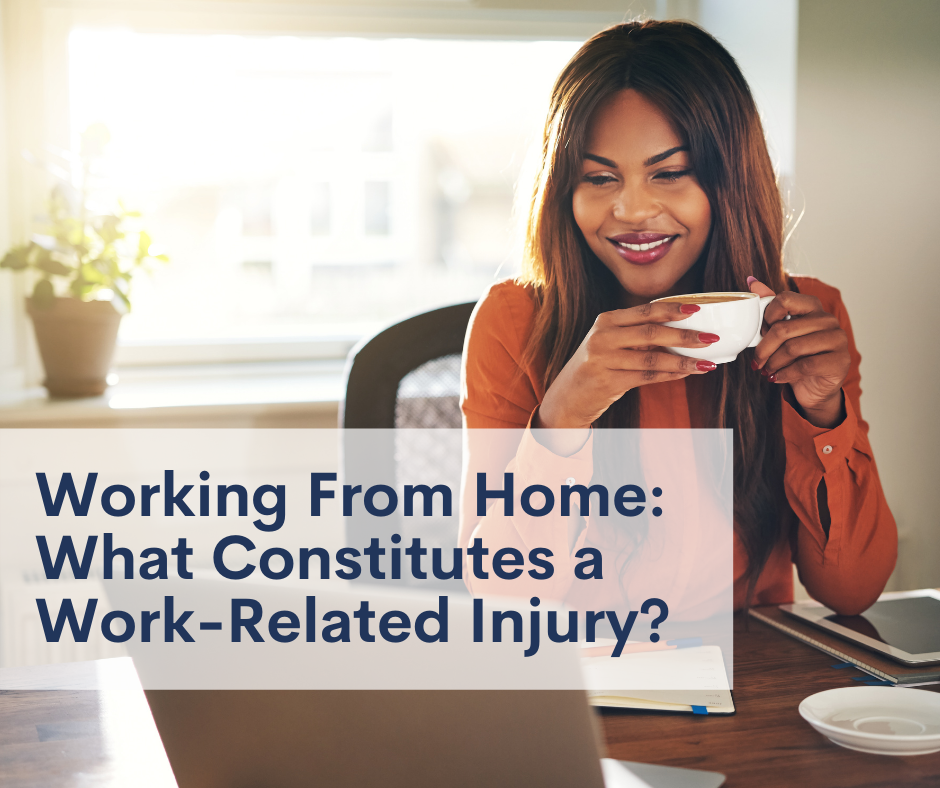
Working From Home: What Constitutes a Work-Related Injury?
Are injuries sustained while an employee is working from home covered under the employer’s occupational injury benefit plan? The answer is grounded in consistent claim investigations and consistent interpretation of plan definitions, and it just may surprise you.
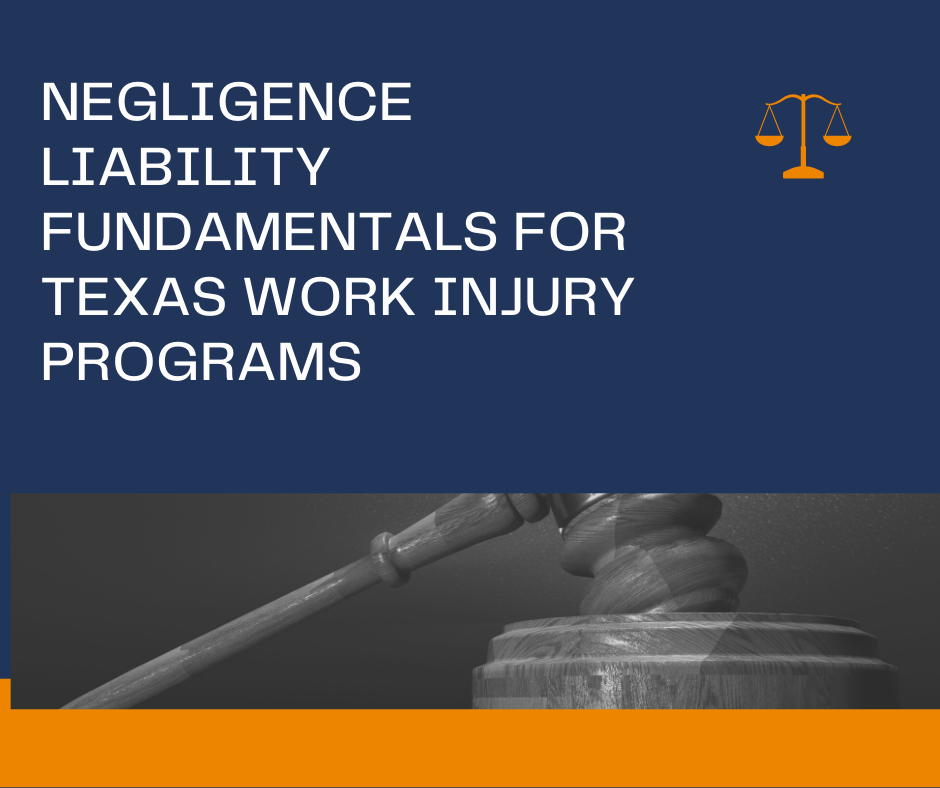
NEGLIGENCE LIABILITY FUNDAMENTALS FOR TEXAS WORK INJURY PROGRAMS
For PartnerSource clients, most Texas work injury programs only see 1.5% of all work-related injury claims receive an attorney letter asserting negligence liability – and only 0.4% of work-related injury claims resulting in an actual lawsuit or arbitration demand. However, how you handle these claims can make or break your program. For that reason, it is critical that employers and TPAs have a basic understanding of negligence liability exposure for Texas work injury programs – and how that exposure differs from general liability exposure applicable to customers.

But there was no “accident.” Does that mean the injury is not covered?
Are injuries sustained while an employee is working from home covered under the employer’s occupational injury benefit plan? The answer is grounded in consistent claim investigations and consistent interpretation of plan definitions, and it just may surprise you.

Industry Five Questions with Kathy Glessner
Born and raised in Junction City, Kansas, working remotely is something this account manager did long before the pandemic. She puts her educational skills to good use when helping clients select insurance, and she loves to connect through sports. Meet Kathy Glessner.
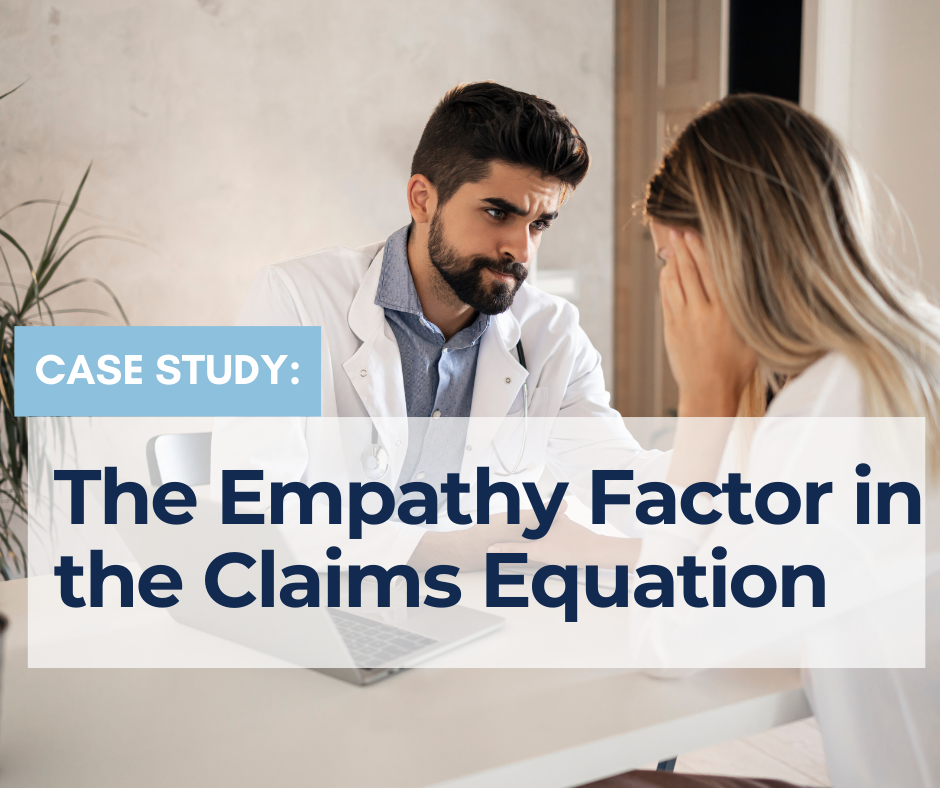
Case Study: The Empathy Factor in the Claims Equation
From colleagues in this industry, we often hear the question, "How could I have handled this claim differently to reach a better end result for the injured worker?" With more than 25 years of experience, PartnerSource has proven that putting the injured worker first is the simple solution to the claims equation. The design of any injury benefit plan should revolve around the needs of an injured worker. To accomplish this, PartnerSource steps into the shoes of the injured worker, considering how their needs can be met before that person is ever injured on the job.

Five Questions with Danielle Rowe
She’s a Midwesterner with a heart for helping injured workers in Texas. While she may love time on the beach, her favorite activity of late is helping others sign up for vaccines.
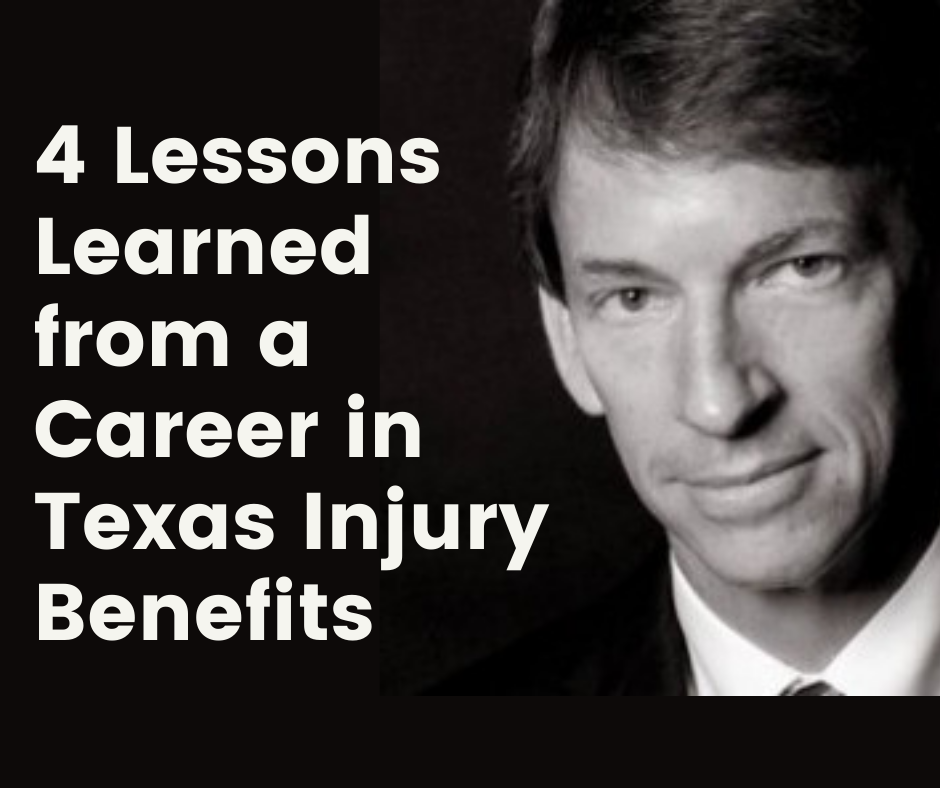
4 Lessons Learned from a Career in Texas Injury Benefits
Since announcing my retirement from PartnerSource at the end of March, I’ve been reflecting on what has been a wild and wonderful ride. As I enjoy memories from decades in this business and think critically about what has led me to this next chapter, I see four themes that may also help you strive to be your best.
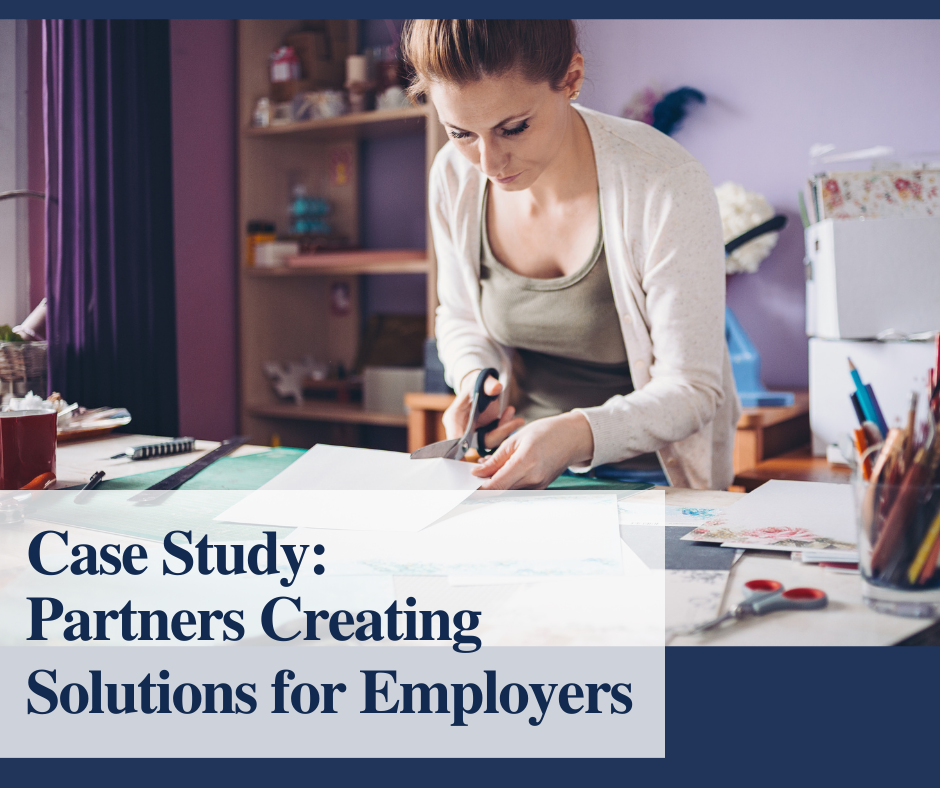
Case Study: PartnerSource Partners Creating Solutions for Employers
At the annual PartnerSource Employers’ Conference, clients have the opportunity to meet potential new vendor partners that share their commitment to better medical outcomes, improved benefits for injured workers and cost savings for employers. One employer’s challenge was solved recently by collaborating with one of these trusted vendors who were able to provide a creative outcome that benefited everyone involved.

Five Questions With: Valerie Harding
It’s very likely that hers will be the first face you see if you come to the PartnerSource offices. She’s an engaging people person with her feet firmly planted on the ground, and a competitive streak she uses to push herself to be her best. Find out more about claims manager Valerie Harding.
PartnerSource Client Update: DOL Announces Rolling Terminations of COVID-19 ERISA Deadline Extensions
On February 26, 2021, the Department of Labor ("DOL") updated guidance that it previously issued on May 4, 2020 with respect to the COVID-19 pandemic, extending certain reporting and notice deadlines for employee benefit plans. Here is what you need to know about the changes.
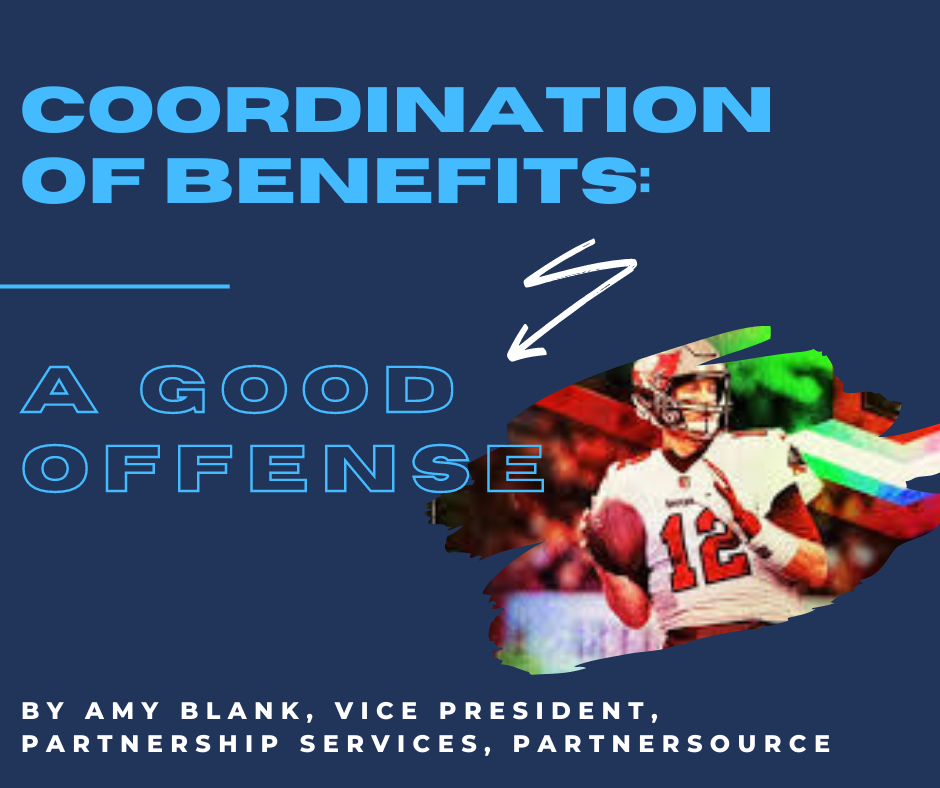
Coordination of Benefits: A Good Offense
Last month, my colleague Kelly Norwood reviewed the keys to playing a good defense, an important part to a successful Texas injury benefit program. I will review ways in which a great offense will allow you to achieve the best possible outcomes for your injury benefit program while providing excellent benefits for the participants.
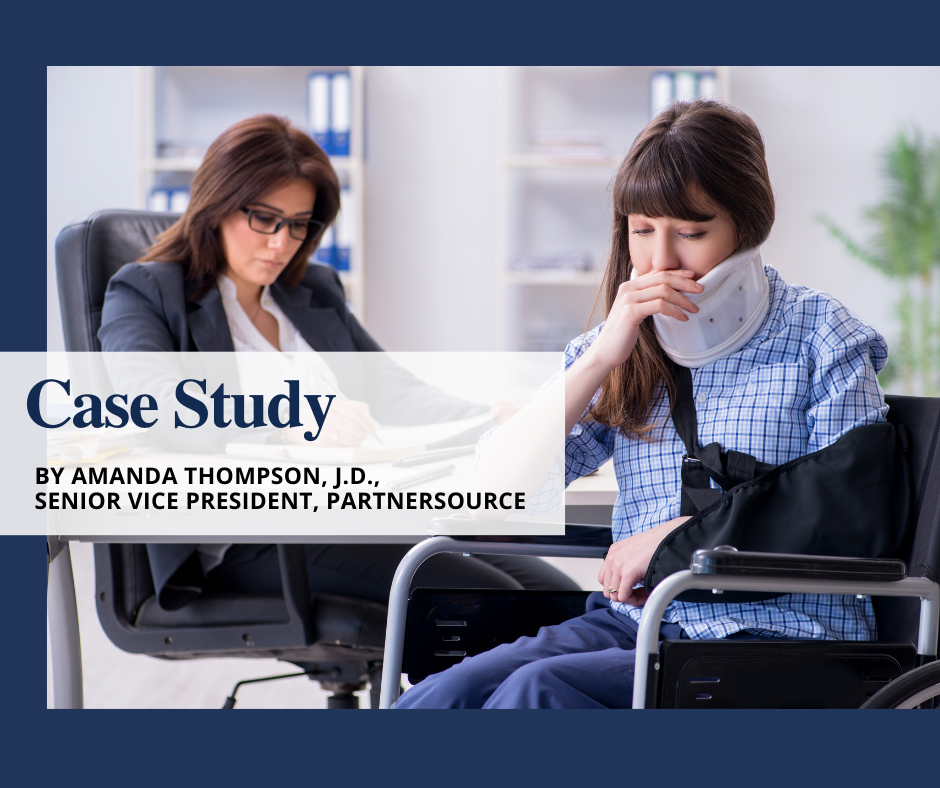
Case Study: Above All Else, Take Care of the Injured Employee
Many PartnerSource clients have Injury Benefit Plan maximums in the range of $300,000-500,000, and for almost all claims, that amount is sufficient. But what happens when the Plan maximum isn’t enough to meet the needs of an employee catastrophically injured on the job?
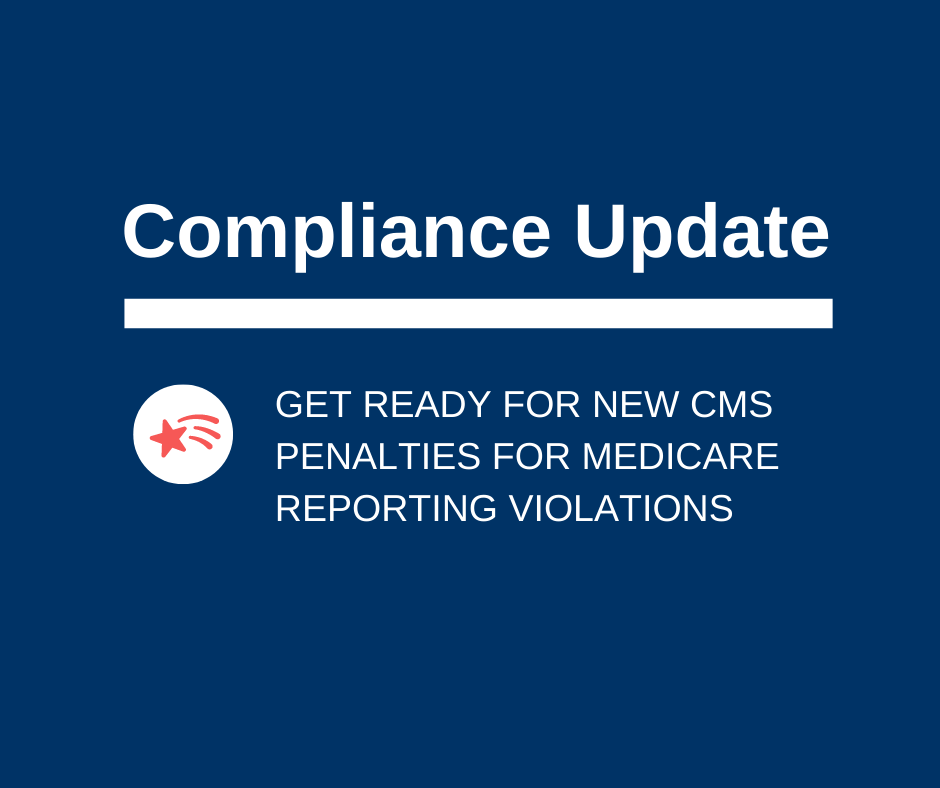
Get Ready for New CMS Penalties for Medicare Reporting Violations
<In 2020, the Centers for Medicare & Medicaid Services ("CMS") proposed rules for calculating and imposing civil monetary penalties when a group health plan ("GHP") or non-group health plan ("NGHP") fails to comply with Section 111 Medicare reporting requirements. CMS technically has until 2023 to issue a Final Rule for CMS penalty enforcement – however, the recent release of a new Medicare Reporting User Guide may signal that CMS will issue this Final Rule sooner rather than later.
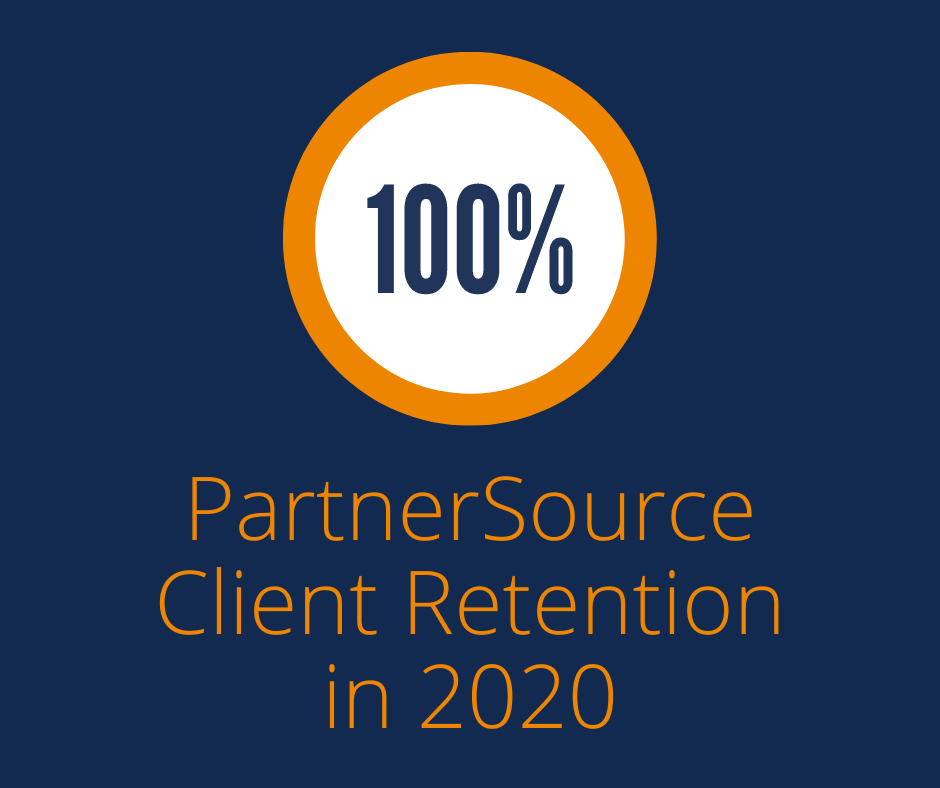
PartnerSource Sees 100% Client Retention in 2020
In more than a quarter century of business, PartnerSource has seen many milestones. In 2020, PartnerSource achieved something extraordinary: 100% client retention.
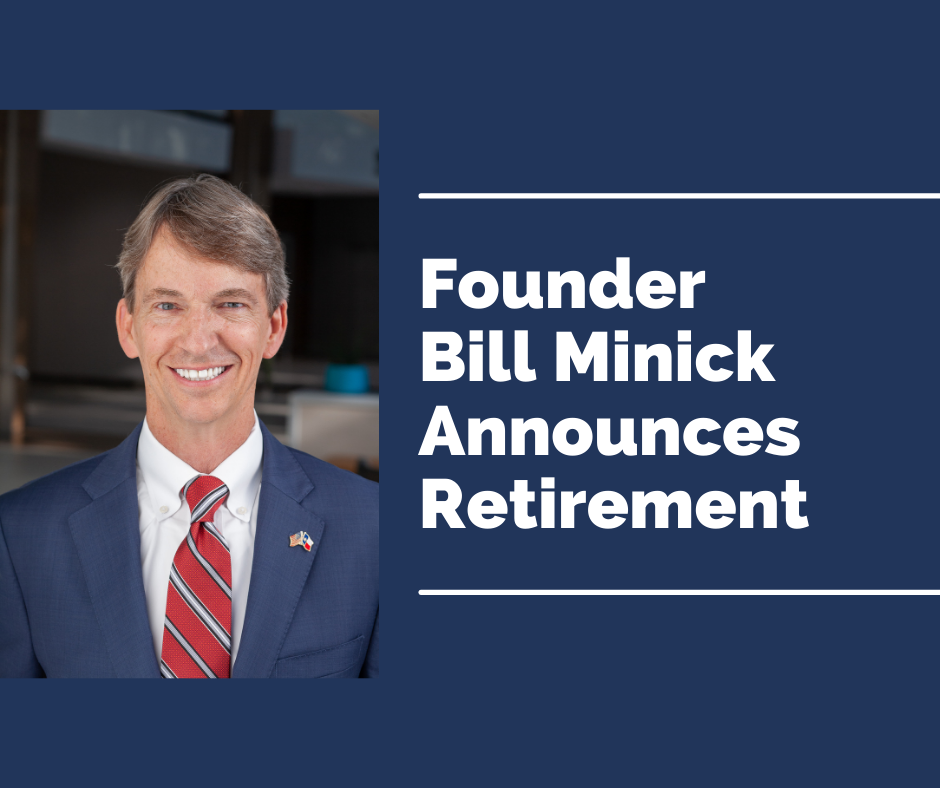
Bill Minick to Retire
Bill Minick, founder of PartnerSource, has announced his retirement as chairman at the end of March. Jennifer Hurless, president of PartnerSource, will continue in her current role leading this company that has proven better business comes from taking good care of injured employees.

Use of Electronic Onboarding of Arbitration Policies
Companies with Texas injury benefit plans are increasingly using electronic onboarding for applying arbitration policies to negligence liability disputes that Texas employees could bring for Texas work-related injuries.

Playing Good, Clean Defense in 2021: A Look at Your Plan's Coordination of Benefits Provisions
Let’s begin 2021 by studying your work-injury program’s legal and conceptual basis for “defending” the integrity of an occupational injury benefit plan while also protecting the viability and intent of federal benefit programs.

Modification of an Arbitration Award: The Trial Court’s Limited Authority
In Ortiz v. Builders First Source – S. Tex. LP, 2020 WL 7711294, *__ (Tex. App. – Houston [14th Dist.] Dec. 29, 2020, no pet.), the Court of Appeals for the 14th District of Texas denied Ortiz’s request to add pre-judgment interest and costs to his favorable arbitration award.

Five Questions with: Nan Dillon
She will don a Batman mask for a PartnerSource video, cheer on soccer teams in the freezing cold, and bring a smile or laugh to anyone she meets. Her fun, outgoing spirit is just part of the warm, driven individual that is vice president of Partnership Services at PartnerSource. Get to know Nan Dillon.
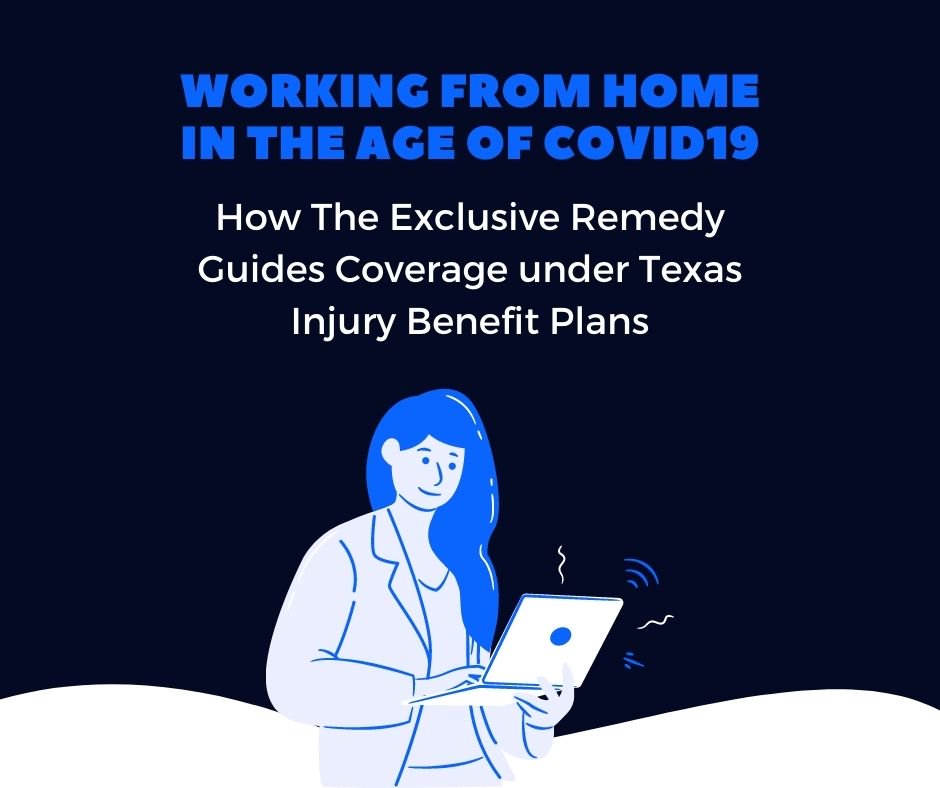
Working From Home during COVID-19: Reasoned Guidance for Texas Injury Benefit Plans
November 23, 2021
By Staci Cassidy , J.D., senior vice president of PartnerSource
COVID-19 has made working remotely a necessity in many industries. For example, many employers have issued computers to at-home workers, but have likely exercised little-to-no control over the employee’s at-home work environment. Does this recent uptick in the number of employees working from home expand the circumstances under which an injury may be considered “work-related” and eligible for occupational injury benefits?

Five Questions With: Alisa Garland
November 19, 2020
An insatiable curiosity drives Alisa Garland, information services manager, to dig deeply into the data to find out how and why people get hurt on the job. This dynamic professional is energized by her deep commitment to helping injured workers, taking care of her family, and finding the spiciest peppers on the planet. Find out more about Alisa Garland.

PartnerSource Honors Jeffrey Strege with Greenshield Award
Professional recognized for highest level of achievement in delivering better medical outcomes & economic development through alternatives to workers’ compensation
DALLAS, Texas (Oct. 28, 2020) – PartnerSource, the leading source for responsible alternatives to traditional workers’ compensation in Texas, recently honored with the Greenshield Award Jeffrey Strege, formerly senior director of risk management for Sysco Foods and now senior director of risk management with Academy Sports + Outdoors. The Greenshield Award is given to an outstanding professional who is committed to helping deliver better medical outcomes and economic development through responsible alternatives to workers’ compensation. Learn more about Jeffrey Strege.

PartnerSource Names 2020 Compassionate Service Award Winners
Winners noted for outstanding dedication to employees’ health and well-being
DALLAS, Texas (October 28, 2020) – PartnerSource, the leading source for responsible alternatives to traditional workers’ compensation in Texas, recently honored two industry professionals with awards for their outstanding commitment and dedication. Nancy Lott, an adjuster with Brinker International; and Jose Martinez, claims manager with Providence Risk and Insurance Services; were each honored for their compassionate commitment to injured workers. Learn more about the winners of the Compassionate Service Awards.
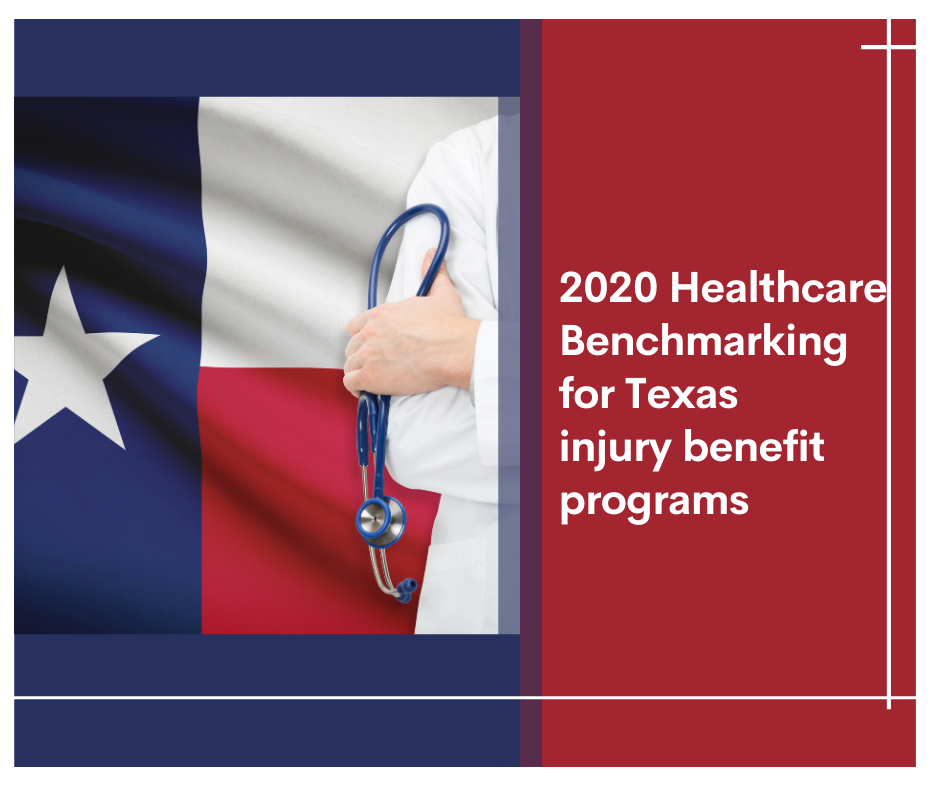
2020 Healthcare Benchmarking for Texas injury benefit programs reflects strong performance for injured workers, employers
October 26, 2020
Relying on the largest claims database for Texas injury benefit programs, PartnerSource has released the 2020 Texas Healthcare Industry Benchmarking Study. Results of the study indicate strong performance for both injured workers and employers.

Five Questions With: Manuel Sosa
October 21, 2020
For Manuel Sosa, a risk analyst with PartnerSource, numbers tell a story that can help people get back to work after an injury. While he loves the science of quantification (he has master’s degrees in both economics and finance!), one thing that he can’t put a number on is his love for this country, his drive to get here, or how much he loves giving back.Find out more about Manuel.
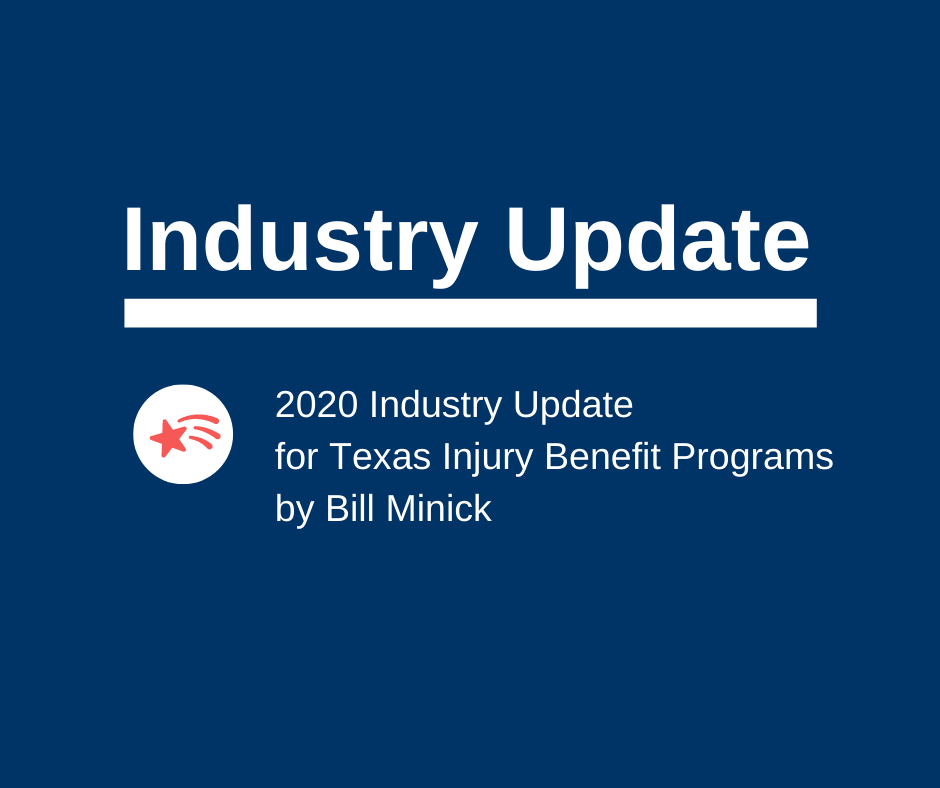
2020 Industry Update for Texas Injury Benefit Programs
October 8, 2020
Bill Minick, Chairman
2020 was an amazing year for Texas injury benefit programs, with:
- New, statistically-credible research showing advantages for injured employees and employers,
- More transparency in goals and processes,
- Successful rollout of an industry-self-regulated “Seal of Approval” for Texas injury benefit programs, called “QCARE”,
- Adapting to COVID-19, and
- Federal regulatory dialogue on prompt reporting of injury claims.
>the most effective work injury platform in America and will remain keenly focused on the health & welfare of our injured team mates. Learn more here.

Five Questions with Arlene Markham
August 25, 2020
While she has a passion for critical thinking and analysis, Arlene Markham is someone who also isn’t afraid to follow her intuition, which has guided her through pivotal moments in her life to create an incredible life story. This risk technical analyst for PartnerSource is also deeply dedicated to serving others in both her professional and personal lives. Meet Arlene!

ABD: 5 Missteps to Avoid in Drafting Denial Letters under Texas Injury Benefit Plans
August 24, 2020
Sean Parker, vice president, PartnerSource
As part of PartnerSource’s claim consulting services, we see a broad mix of Adverse Benefit Determinations (ABDs) under Texas injury benefit plans. Recently, we were asked by a new client, “What are some of the common missteps you see when reviewing those letters?” There are several aspects to keep in mind when drafting denial letters under Texas injury benefit plans. Here are the top five:

In the News: PartnerSource Lends Expert View to Industry Magazine
August 19, 2020
Experts from PartnerSource are often called upon to lend their expertise. Recently, an article from Amanda Thompson, J.D., senior vice president of PartnerSource, was featured as an “Expert’s View” by WorkersCompensation.com. Read on for “A Pandemic in Play: Love, Basketball and 10 Tips for Success in Virtual Mediation.”

A Pandemic in Play: Love, Basketball and 10 Tips for Success in Virtual Mediation
July 22, 2020
Amanda Thompson, J.D., Senior Vice President
It has now been exactly four months since my world changed in the midst of this life-changing pandemic. On March 11, 2020, I got the call from my 84-year-old mother, who – in a most dreadful and devastated voice – shared with me important news: She informed me that the NBA had canceled its season.
In the midst of a pandemic, my mother wrestled with the loss of her favorite sport just as I struggled with how mediations of Texas negligence liability claims could be conducted by video conference (or “virtually”). Basketball and virtual mediations? If there’s one thing this pandemic has taught us, it’s to stay on your toes and not waste a second of game play, so lessons from the court translate well into business in a pandemic, too. Here are my tips for achieving success through virtual mediation, inspired by my mother’s favorite sport.

Fifth Circuit Further Addresses Arbitration Exemption for Transportation Workers
July 21, 2020
Julie M. Lambeth, J.D., Executive Vice President
Texas injury benefit programs cannot mandate arbitration of actual benefit disputes under the Employee Retirement Income Security Act (ERISA). However, such programs commonly mandate arbitration of any negligence liability claim by injured employees. The key to this ability on liability claims is the Federal Arbitration Act (FAA), which is of significant importance to nonsubscribers to Texas workers’ compensation.

Five Questions with Dikxi Varughese, Claims Manager
July 19, 2020
Like most parents, Dikxi Varughese has had to get creative to balance the challenges of work and family life in the midst of a pandemic. Find out how her open-minded approach and deep faith guides her in her roles as a mom and wife, and in her job as a claims manager with PartnerSource. Meet Dikxi.
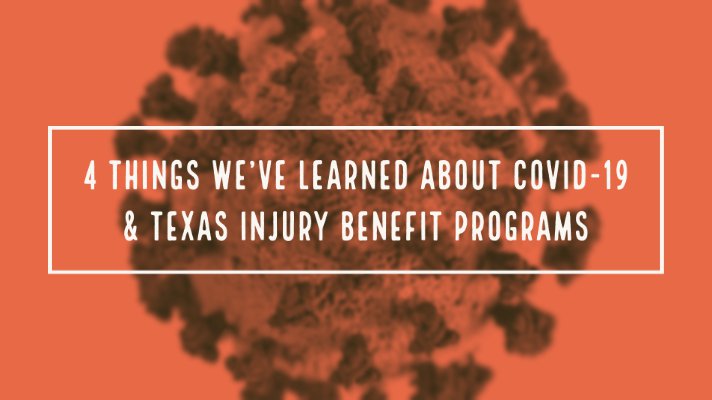
4 things we’ve learned about COVID-19 & Texas Injury Benefit Programs
June 23, 2020
By Bill Minick, Chairman
Employers in and out of Texas workers’ comp handle COVID-19 injury claims similarly, and may have related liability exposures. But the pace of innovation and performance continues much faster in the Texas injury benefit program environment, led by companies that employ unsung heroes we finally recognize.
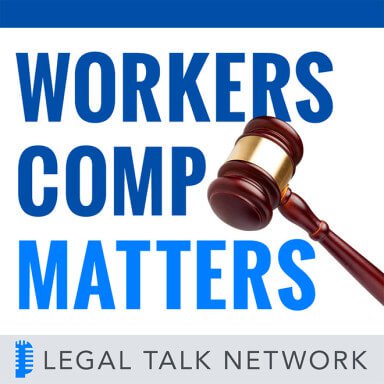
Podcast on the “QCARE Designation: What it Means for Texas Injury Benefit Programs”
June 16, 2020
This “Workers’ Comp Matters” podcast is hosted by Alan Pierce, one of the most respected and accomplished workers’ compensation claimant attorneys in the U.S. Alan visits with Bill Minick, chairman of PartnerSource, about why Texas laws differ from the rest of the country and how the newly-developed QCARE designation is an important marker of responsibility for Texas injury benefit programs. Click here to listen to this insightful conversation.

Five Questions with Amber Labry
June 15, 2020
As executive support for Jennifer Hurless, PartnerSource president, Amber Labry provides that extra hand that keeps things moving smoothly. Her creativity and passion for the mission of PartnerSource also make her a great addition to the marketing team, where she uses her design and organization skills to help others understand how PartnerSource can benefit their employees and their business. Meet Amber.

Form 5500 Filing Requirements During the Pandemic
June 10, 2020
Like most, your Texas Injury Benefit Plan may define the "plan year" as January 1 through December 31. If this is the case, your Form 5500 will be due on July 31, 2020 (the filing deadline is seven months after the end of the plan year). While the U.S. Government has extended some deadlines related to Employee Benefit Plans due to the COVID-19 national emergency, this does not apply to Form 5500 filing deadlines.

DOL EXTENDS ERISA CLAIM FILING DEADLINES
May 10, 2020
The U.S. Department of Labor has just issued a new rule that extends certain timeframes for Texas injury benefit and other ERISA plan participants in response to the COVID-19 pandemic. The rule became effective on April 30, 2020. We provide this initial guidance in good faith, using the information available to us at this time. We recommend all Texas injury benefit plan employer sponsors, service providers and insurers immediately and thoughtfully consider.
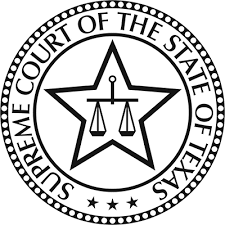
Texas Supreme Court Changes Injury Litigation Rules for COVID-19
On April 27, 2020, the Texas Supreme Court issued its Twelfth Emergency Order regarding the COVID-19 State of Disaster. Of significance to personal injury and employment litigation, this Order does the following ...

FACTOR THIS: EXPOSING PREDATORY PRACTICES OF MEDICAL FACTORING COMPANIES AND RELATED INJURY LITIGATION
May 7, 2020
By Julie Lambeth, JD, PartnerSource Executive Vice President
We have all seen the attorney television advertisements touting large awards for their clients. They claim to fight the insurance companies to obtain the compensation their clients deserve for injuries sustained in an accident. This begs the question of how personal injury claims are being valued.

Five Questions With: Jason Thurmond
May 4, 2020
Jason Thurmond’s career went from construction and flooring to working with clients on their Texas injury benefit plans. While that may seem like an unlikely jump to some, for Jason it was pursuing a passion for taking care of people.
Read on for “Five Questions With” Jason Thurmond, claims manager with PartnerSource.

FAQ on COVID-19 under Texas injury benefit programs
May 1, 2020
On March 16, PartnerSource provided a client update on COVID-19 and Texas Injury Benefit Programs. Learn more about our second installment of COVID-19 guidance.

Texas Nonsubscriber Insurance Market Insights
After more than a decade of hyper-competition that has driven soft (low premium) pricing from innovative insurers, the market for Texas injury benefit programs has experienced significant change in the past year.

Five Questions With Gabe Saenz
Gabe Saenz, senior team coordinator, celebrates his two-year anniversary with PartnerSource in April. Before joining PartnerSource, Saenz spent 10 years working in the legal profession. He spends a few minutes telling us about his work, his creativity, and a motto in which he finds great inspiration.

Texas Innovation: Applied to Injury Benefits
One of the many reasons Texas is a unique place for business is the opportunity to choose your own responsible injury benefit program. NTX, a publication of the North Texas Commission, profiled PartnerSource in its most recent issue, which focused on the future for Texas businesses.

Benchmarking studies reflect strong performance for injured employees, employers
Relying on the largest claims database for Texas injury benefit programs, PartnerSource performs biennial benchmarking studies within the healthcare, manufacturing, retail, trucking & distribution, restaurant, and hospitality industries.

Case Study: ERISA at Work
Putting the focus on the employee provides the best outcomes for both parties.

Top 5 tips on getting injured workers back to work
The likelihood of a long, expensive leave of absence skyrockets if an injured employee is not treated well and the employer is disengaged. Learn 5 tips on getting injured workers back to work.

Five Questions With: Tim Fatheree
Get to know Tim Fatheree, claims manager at PartnerSource.



